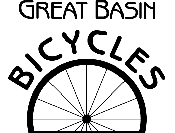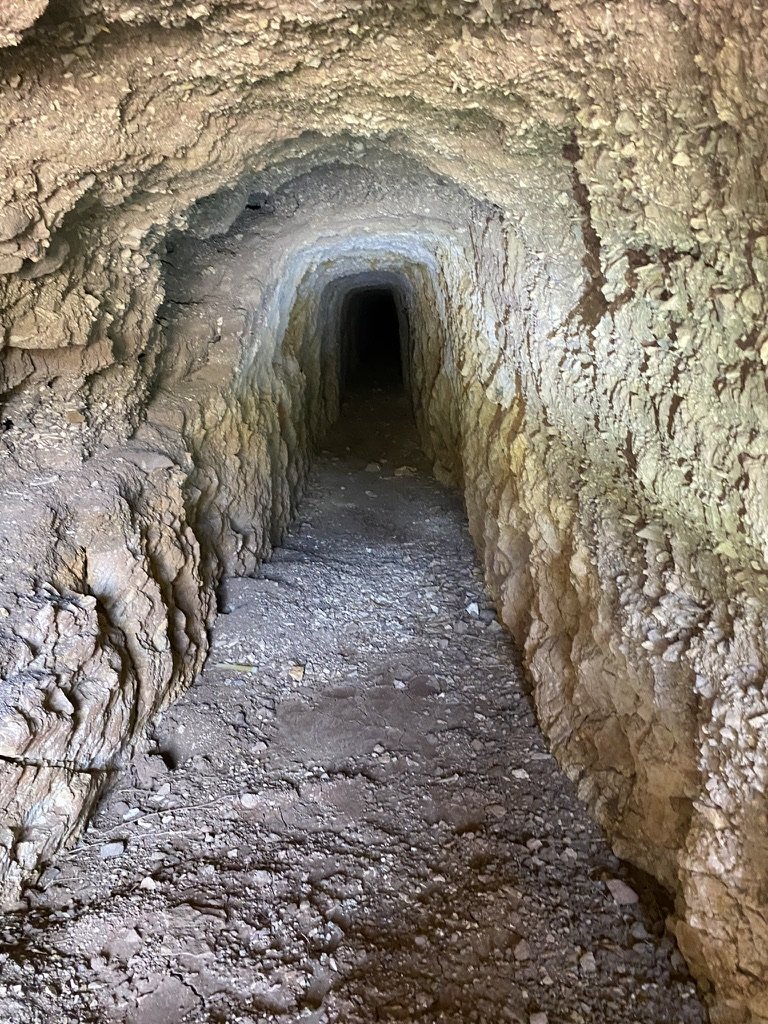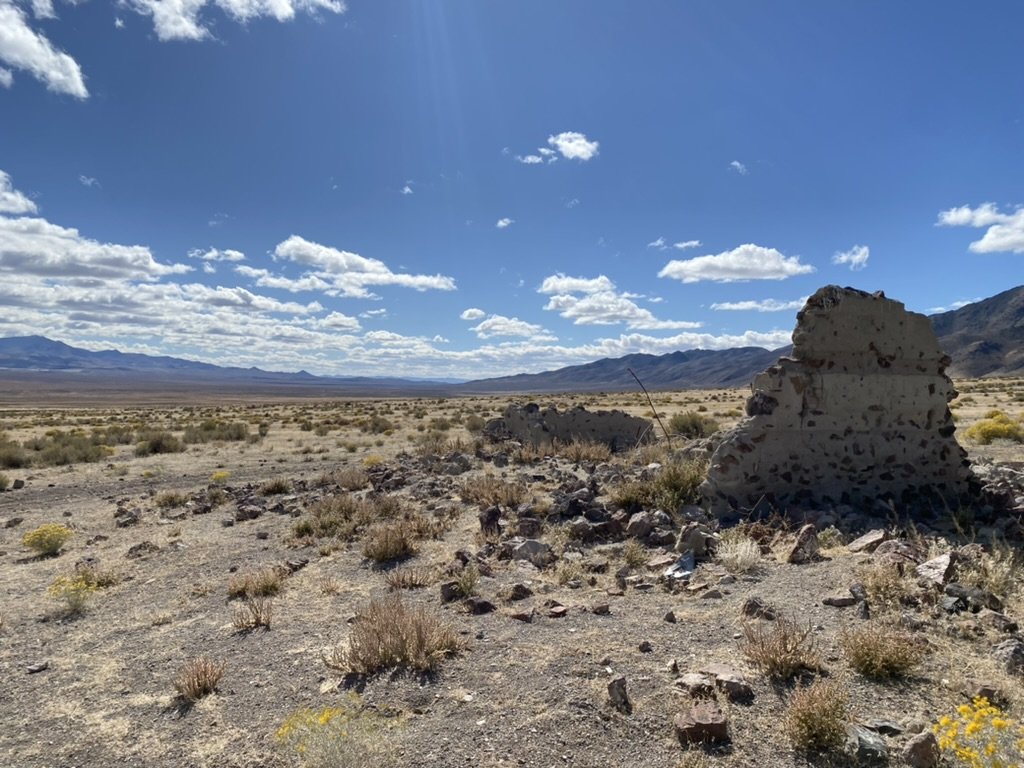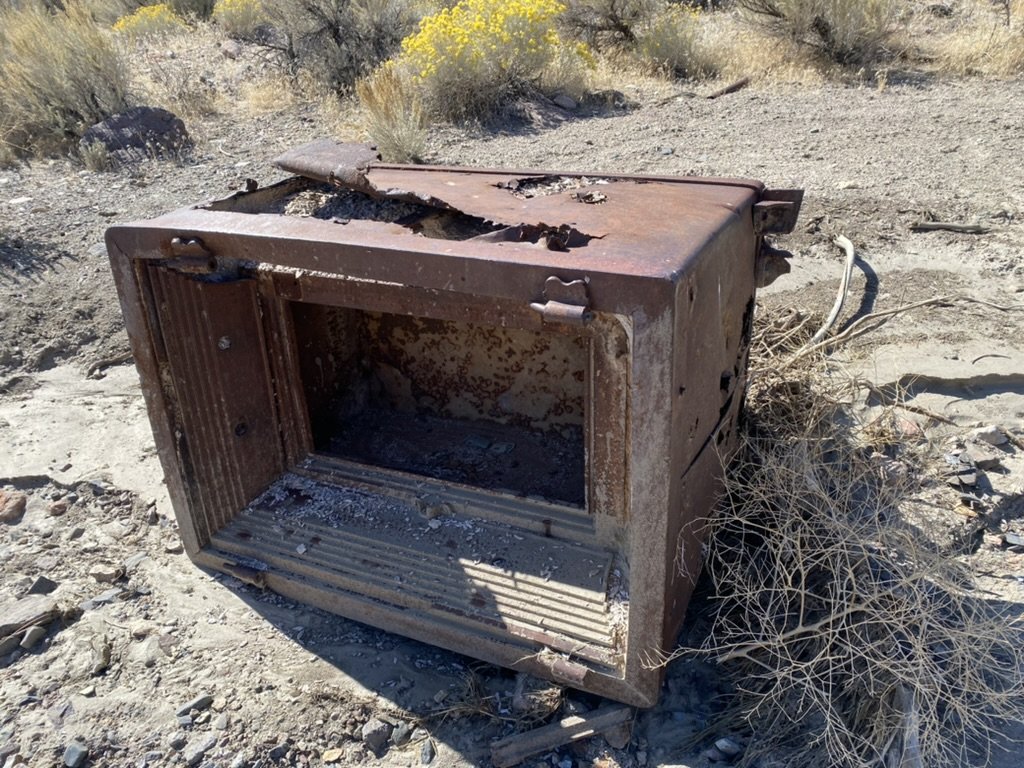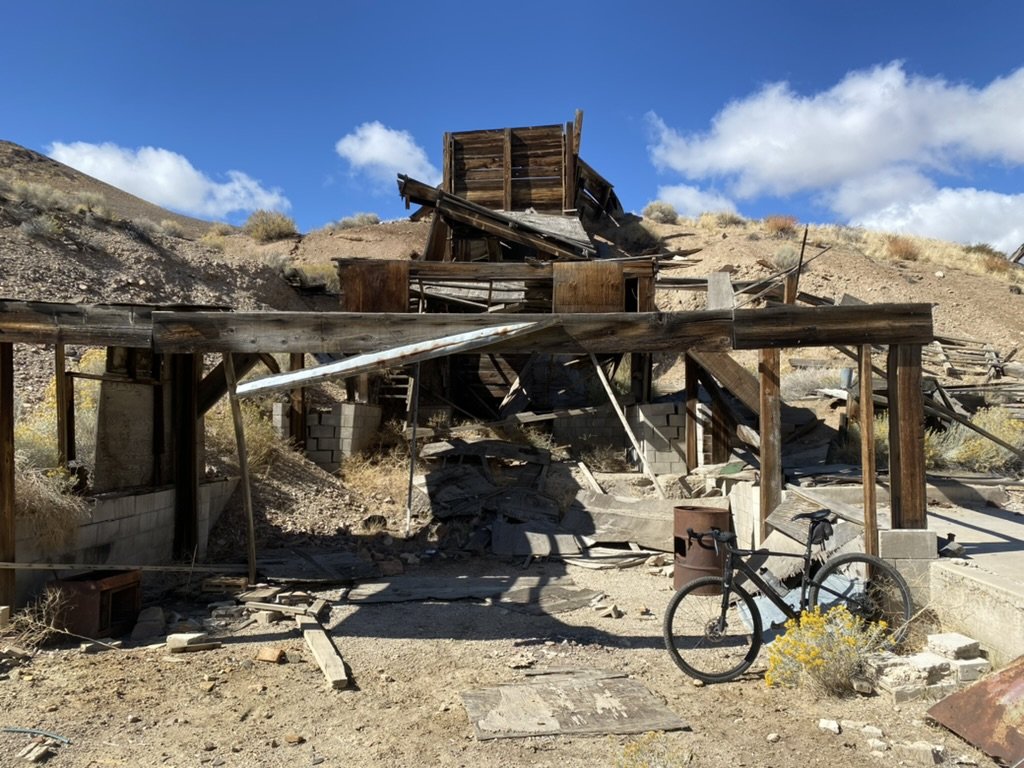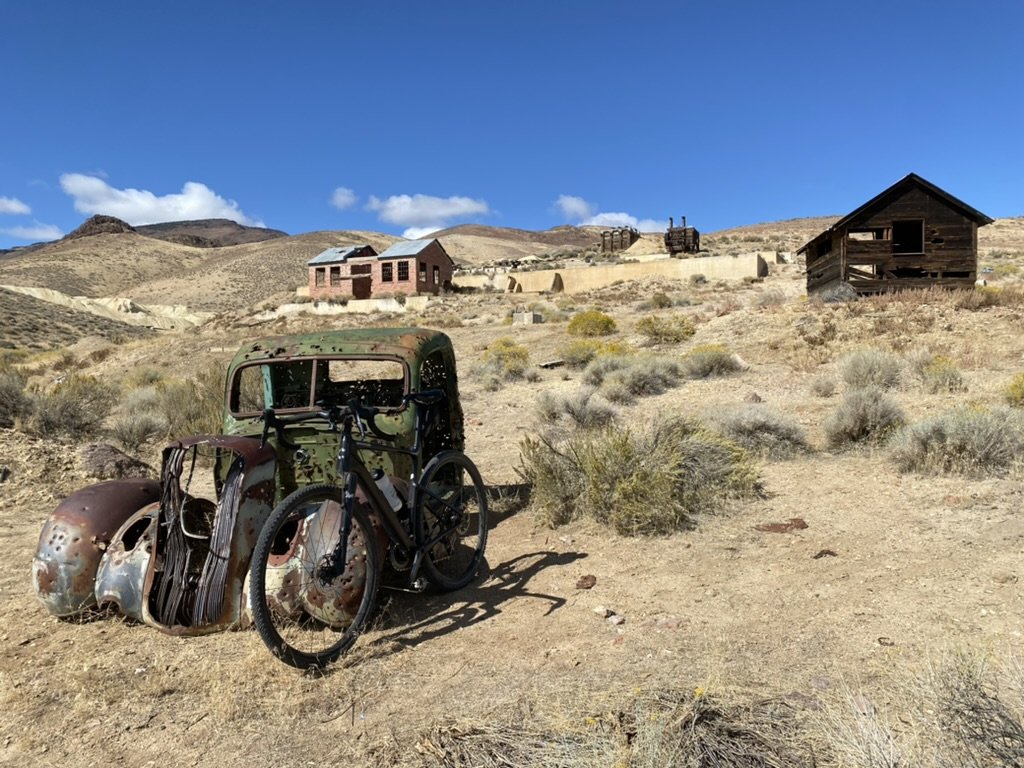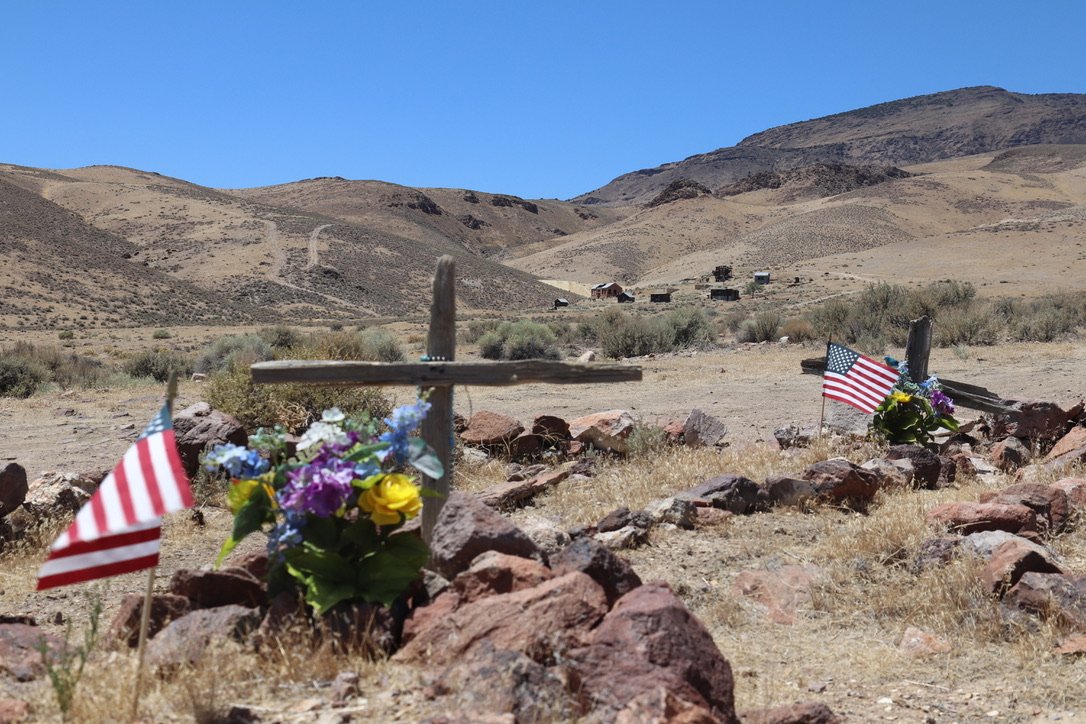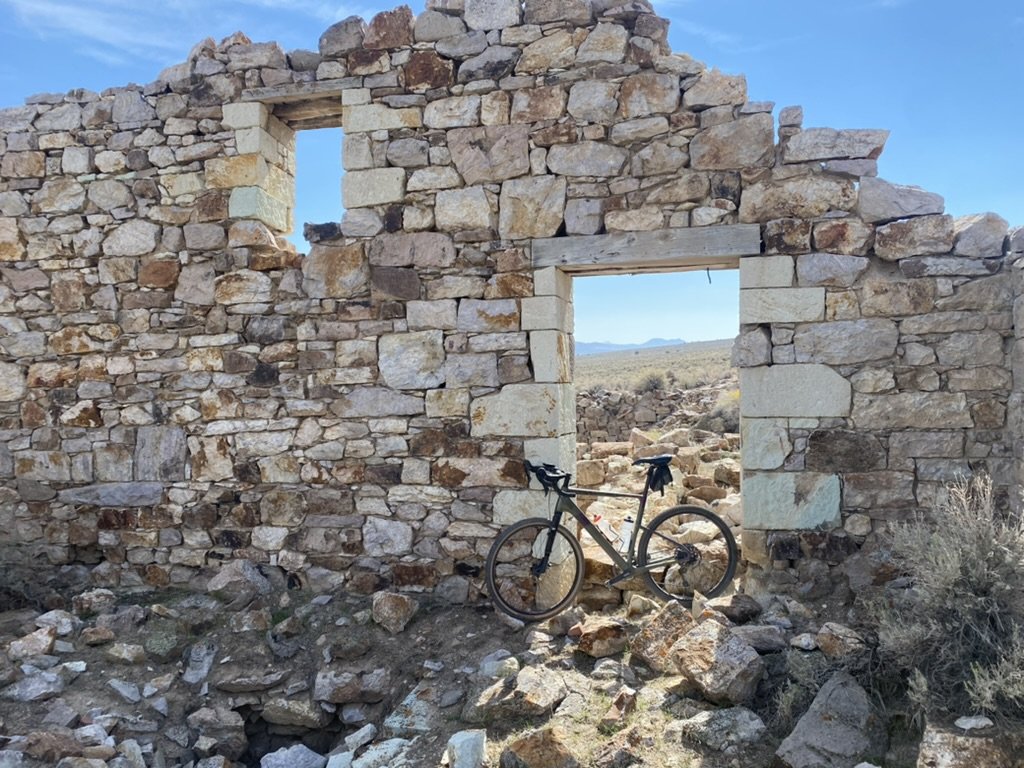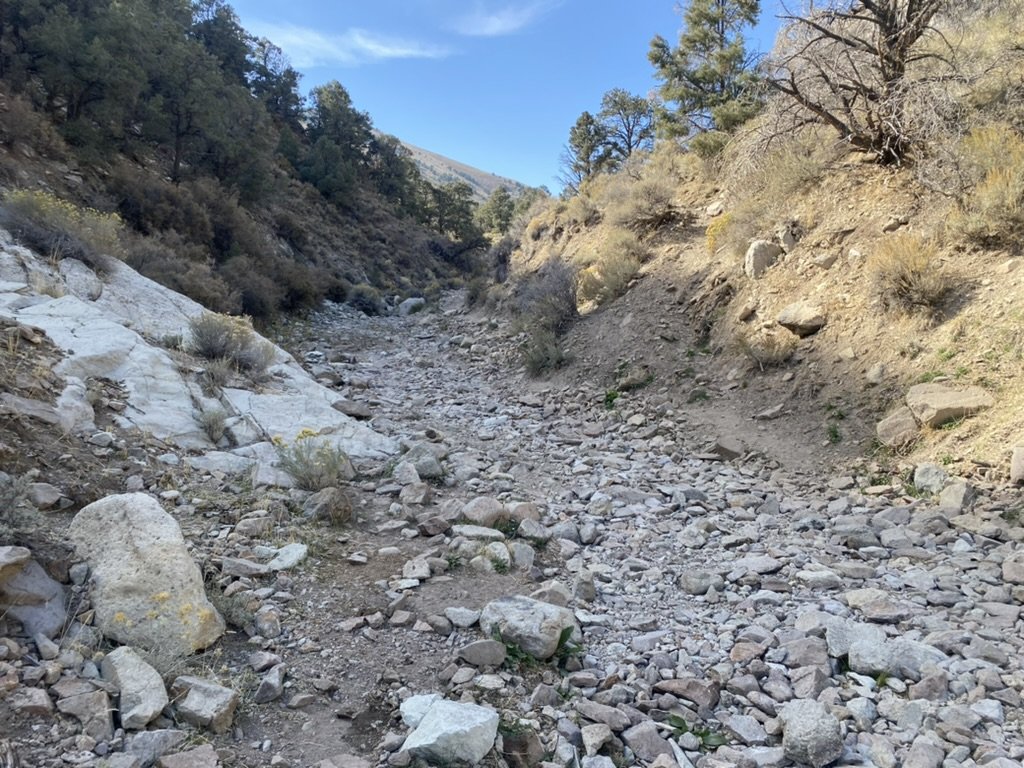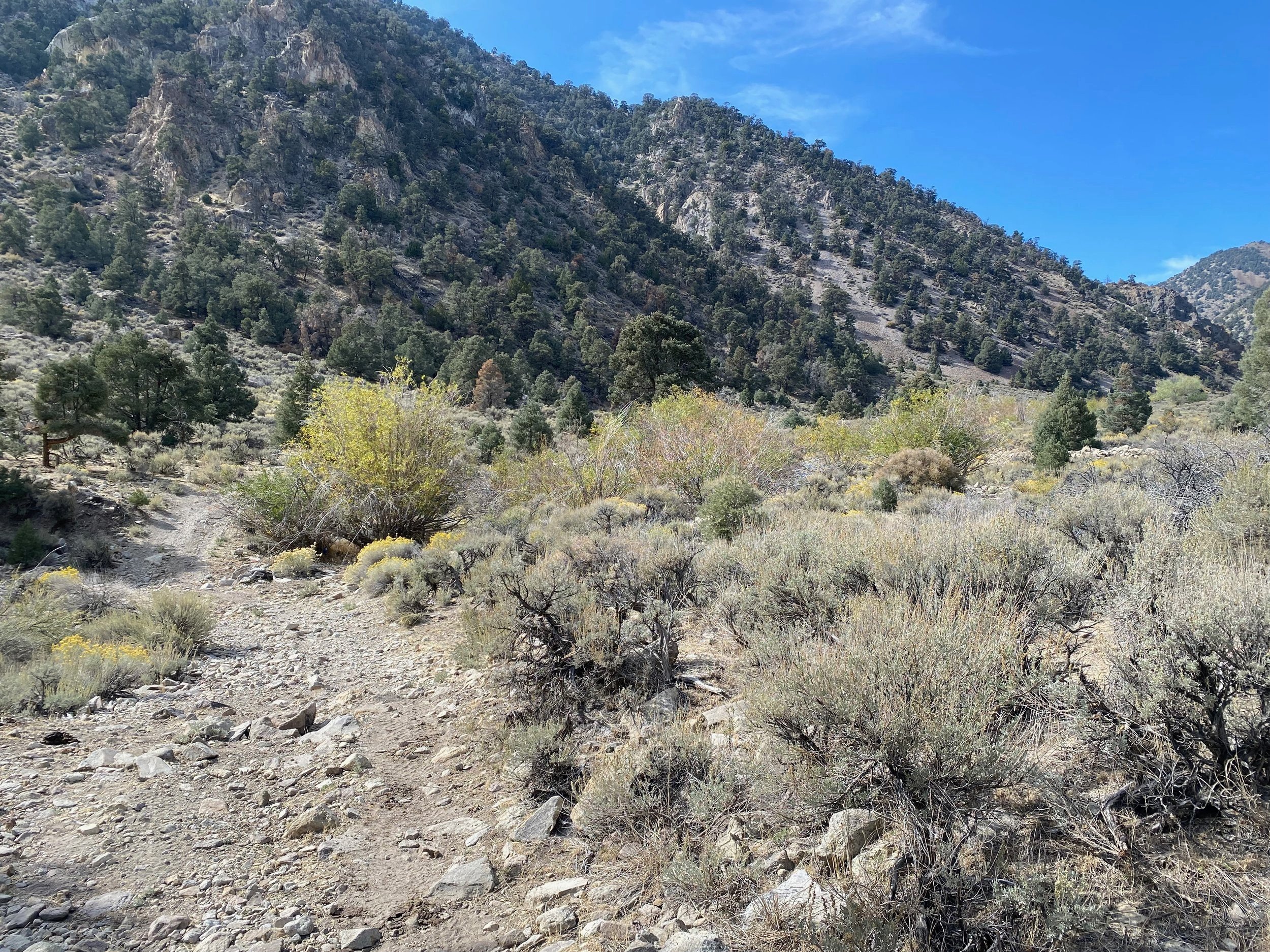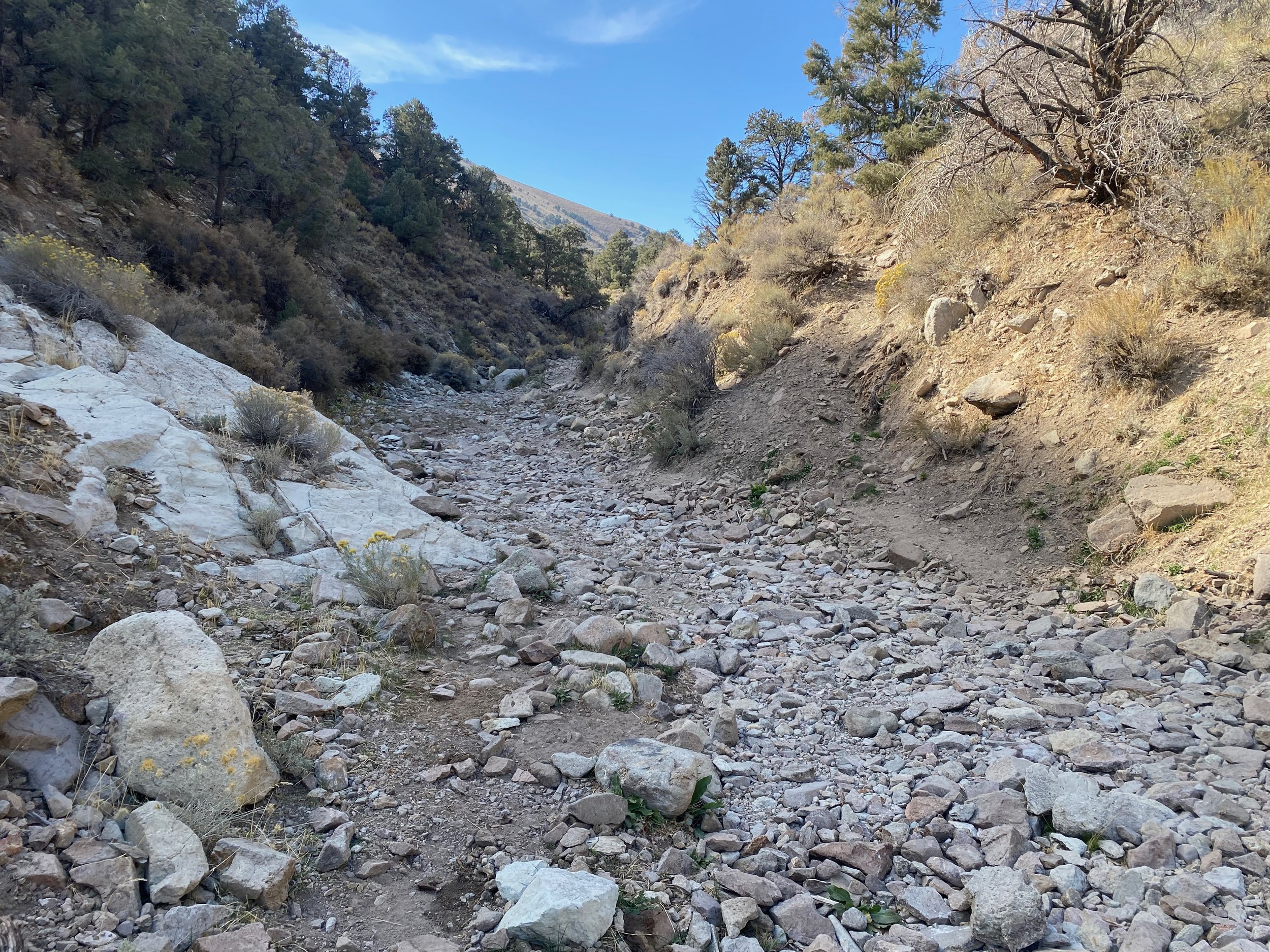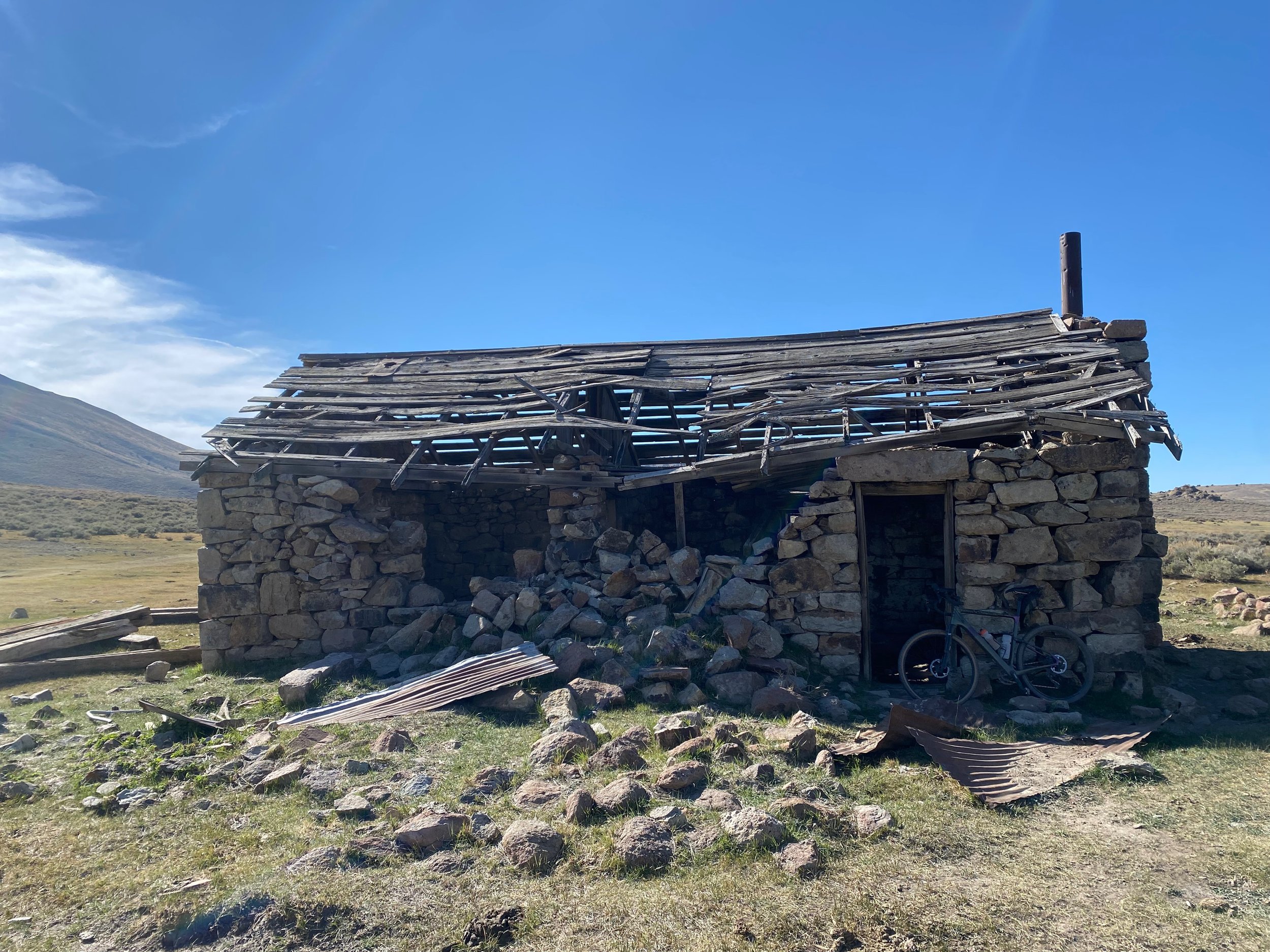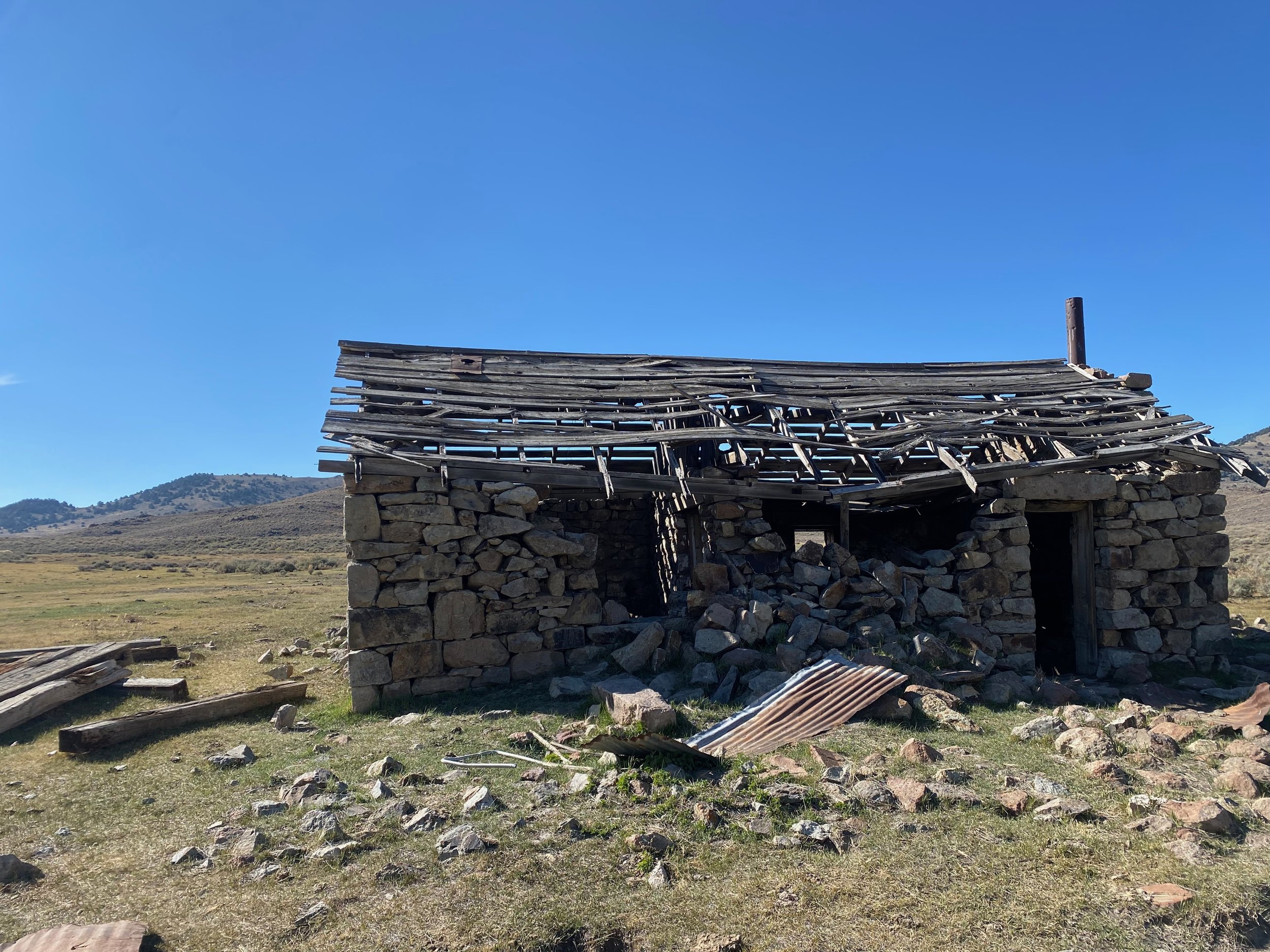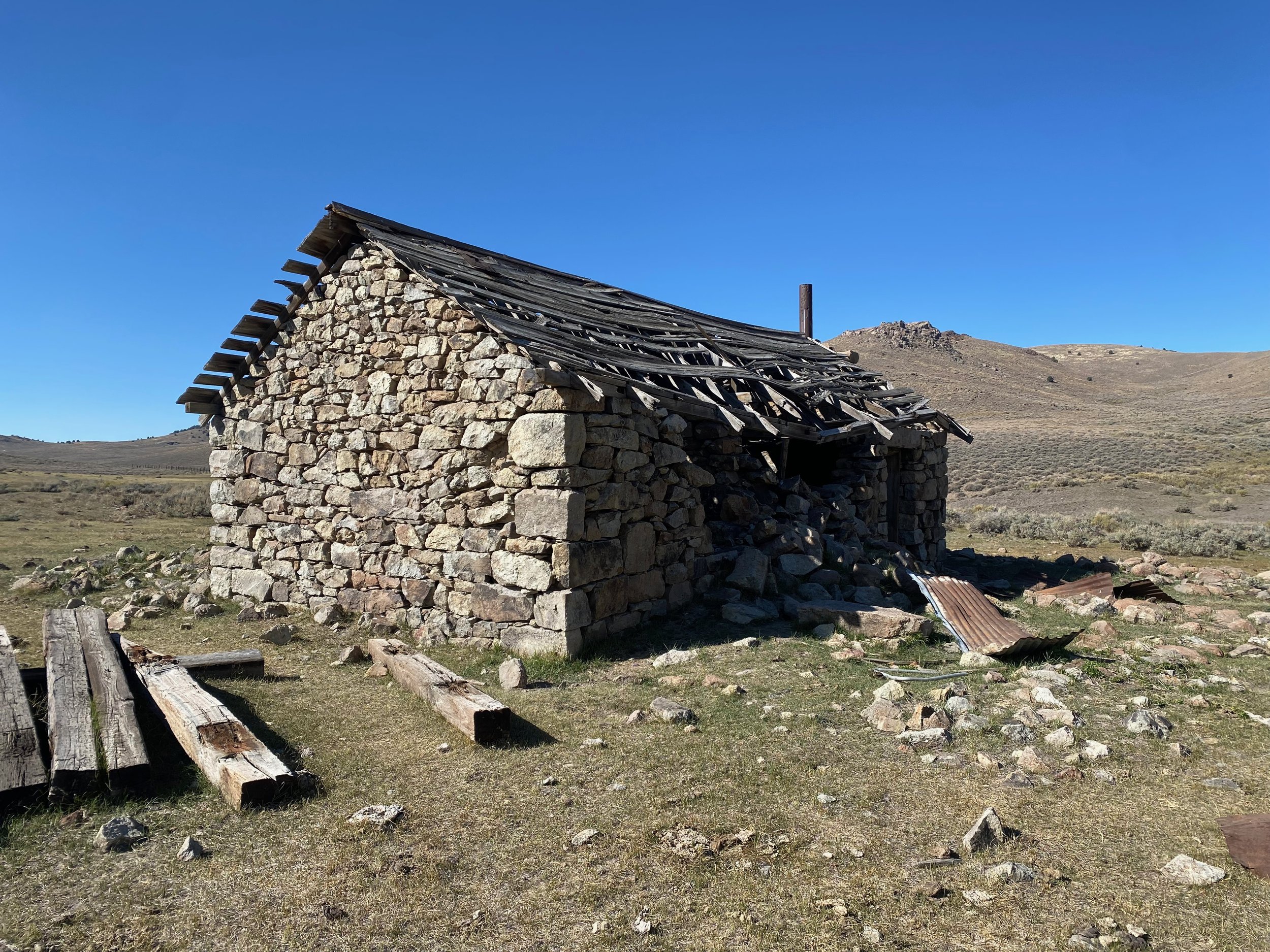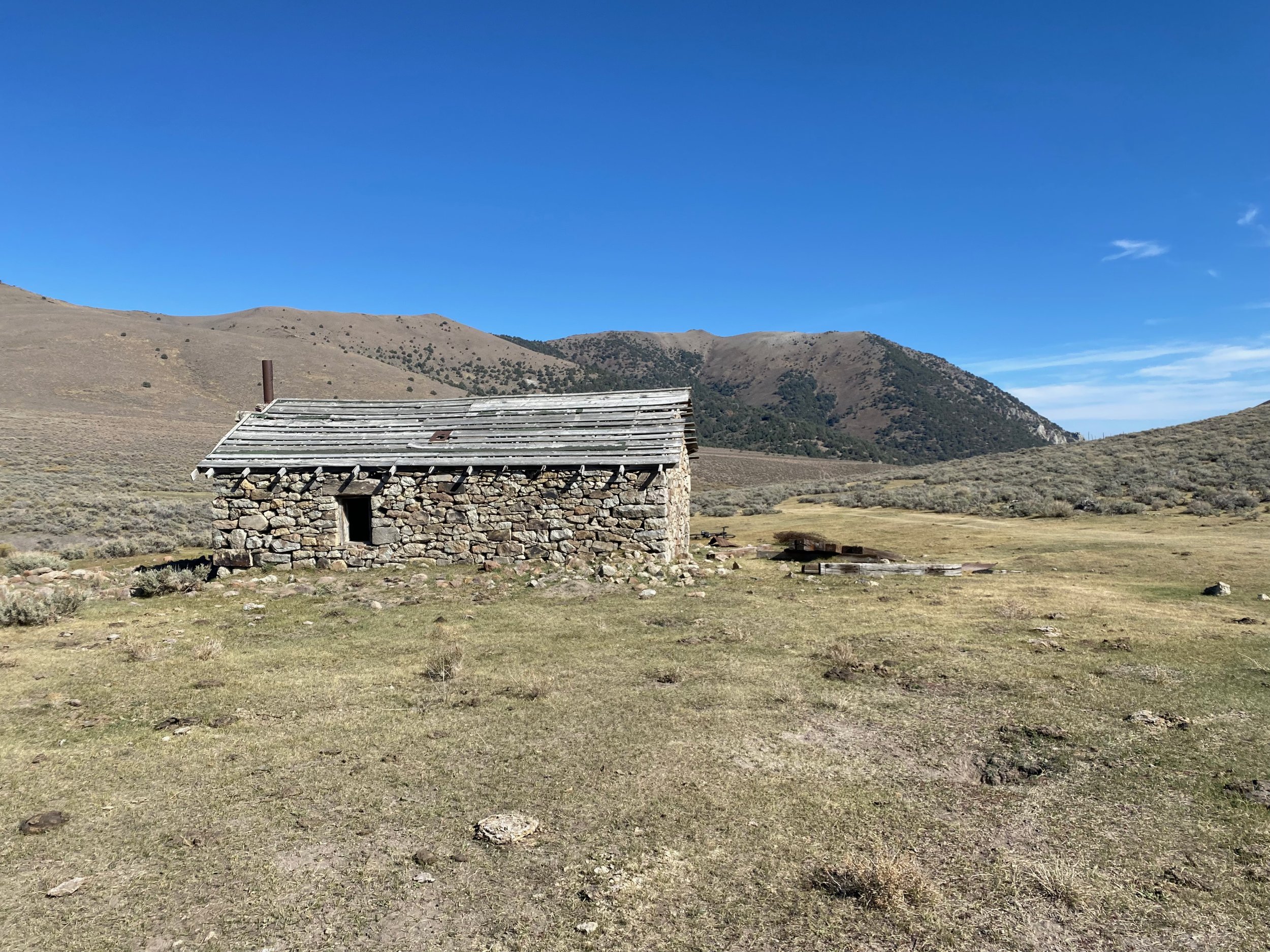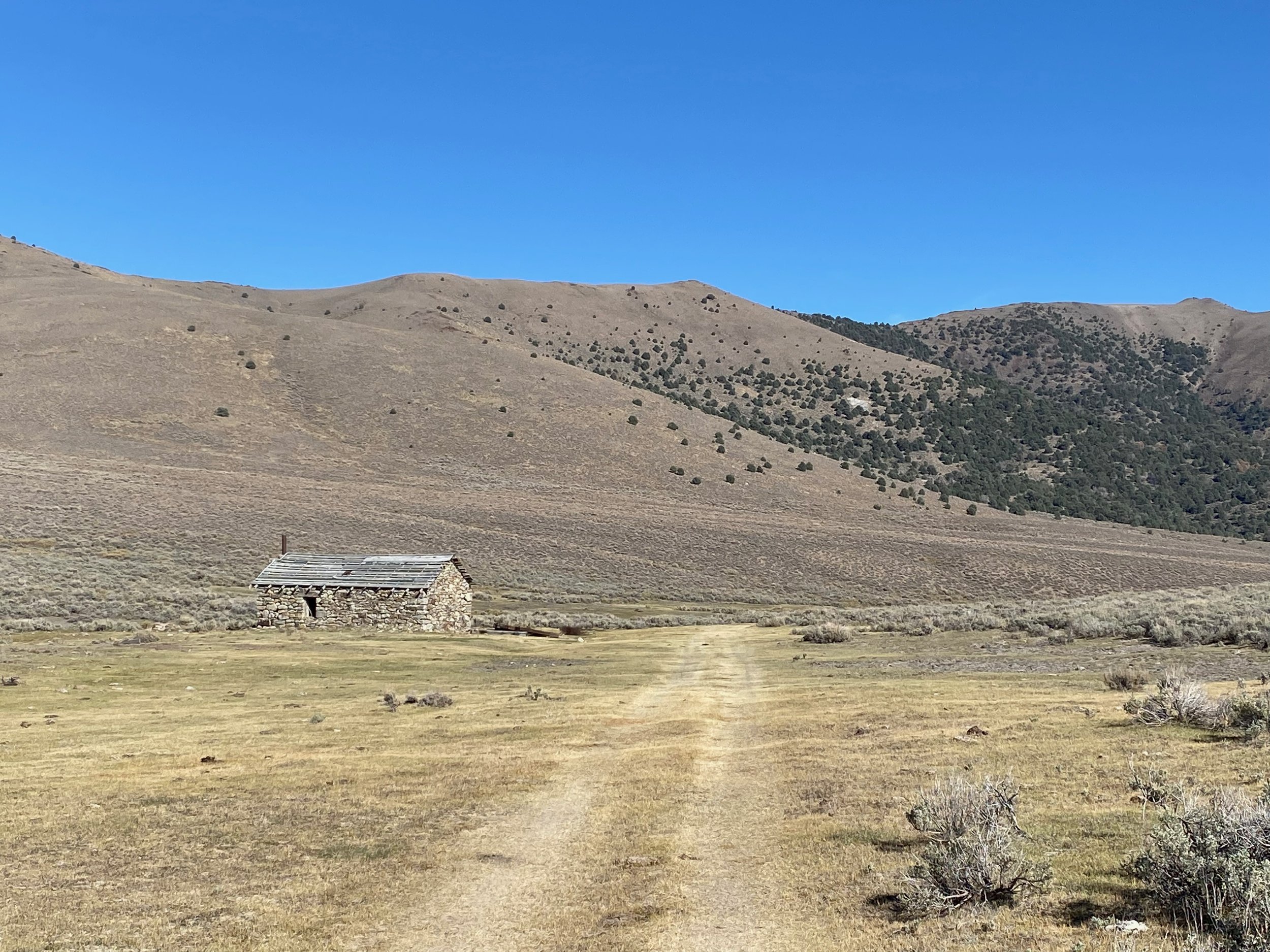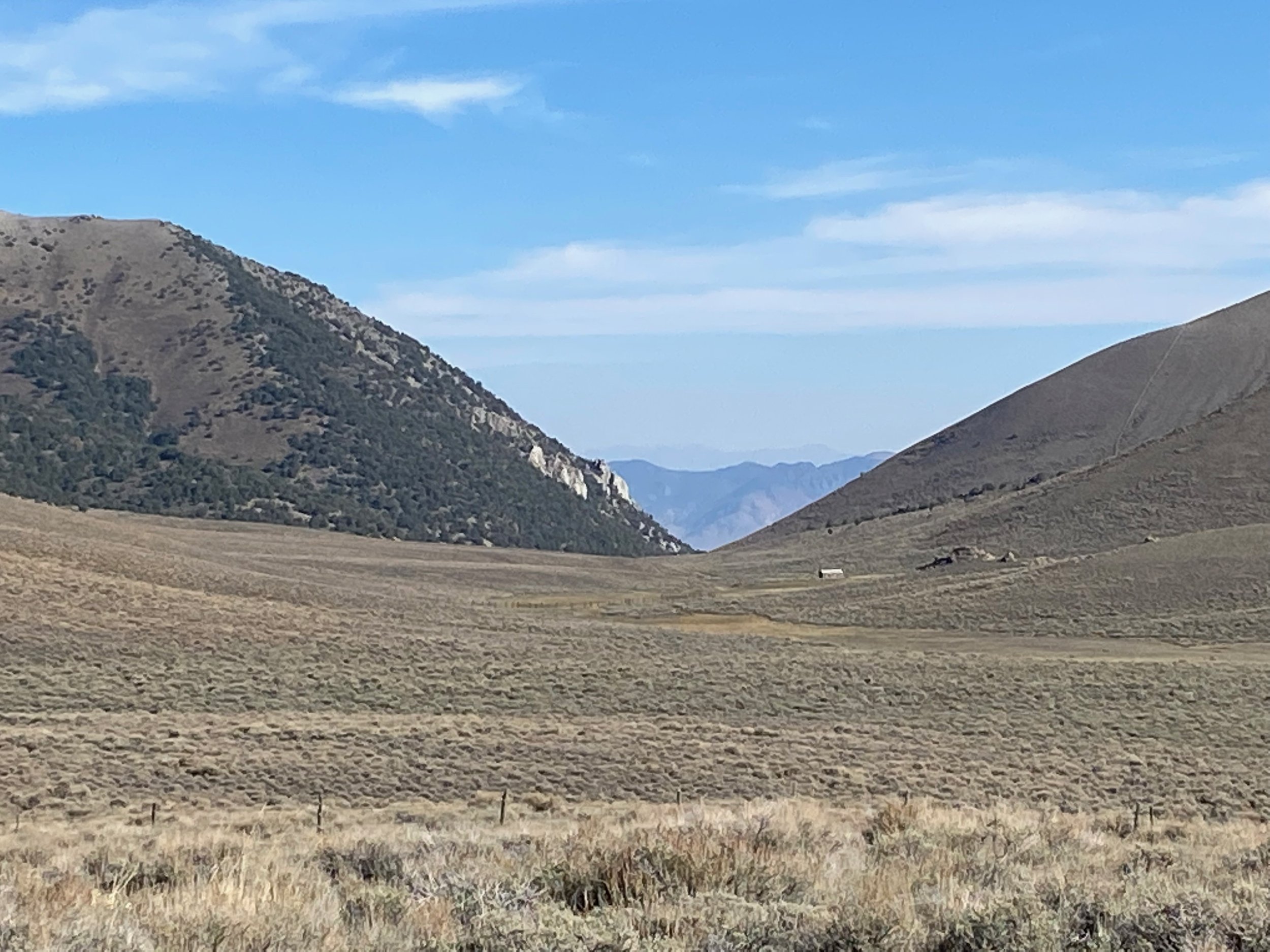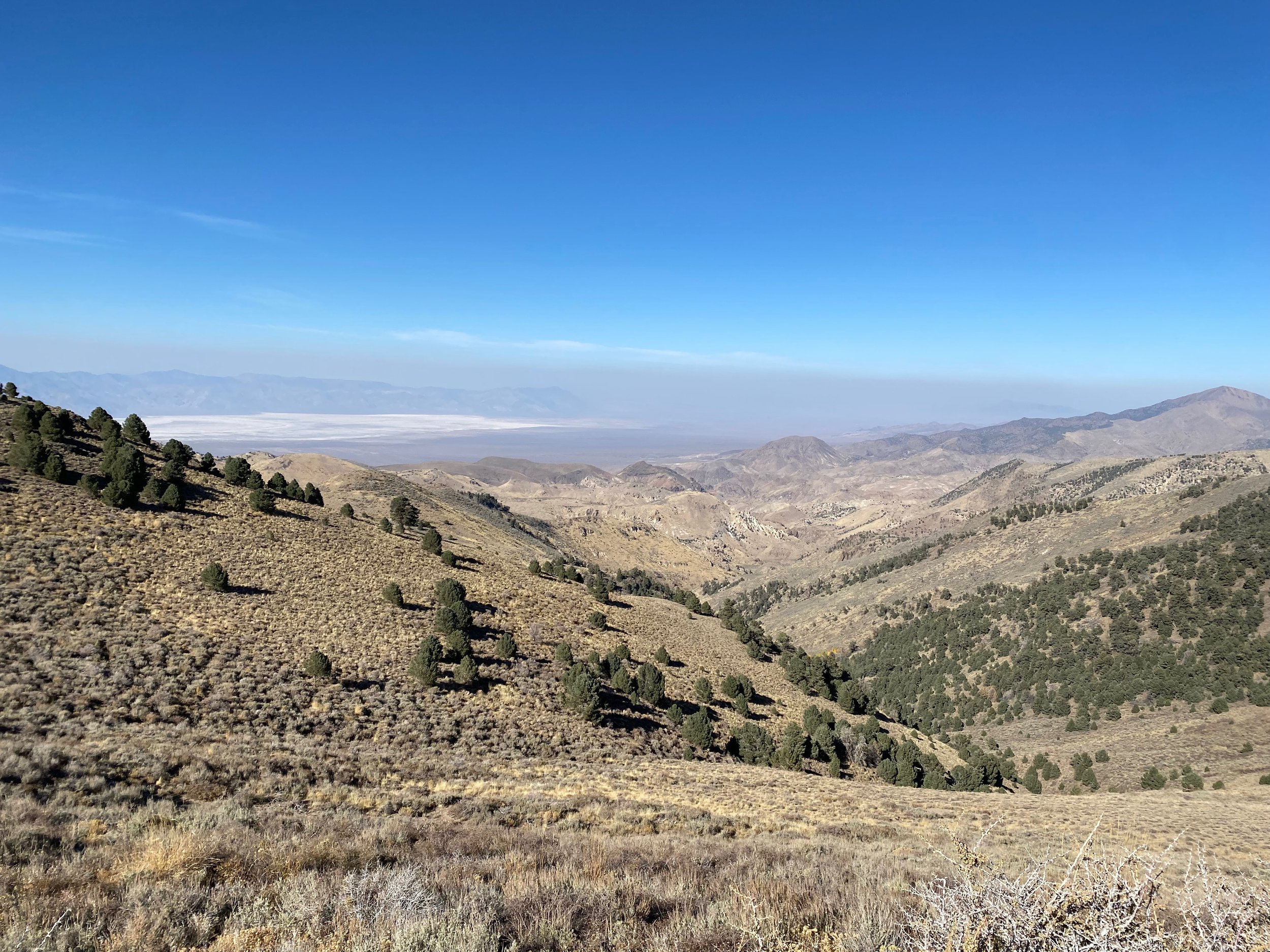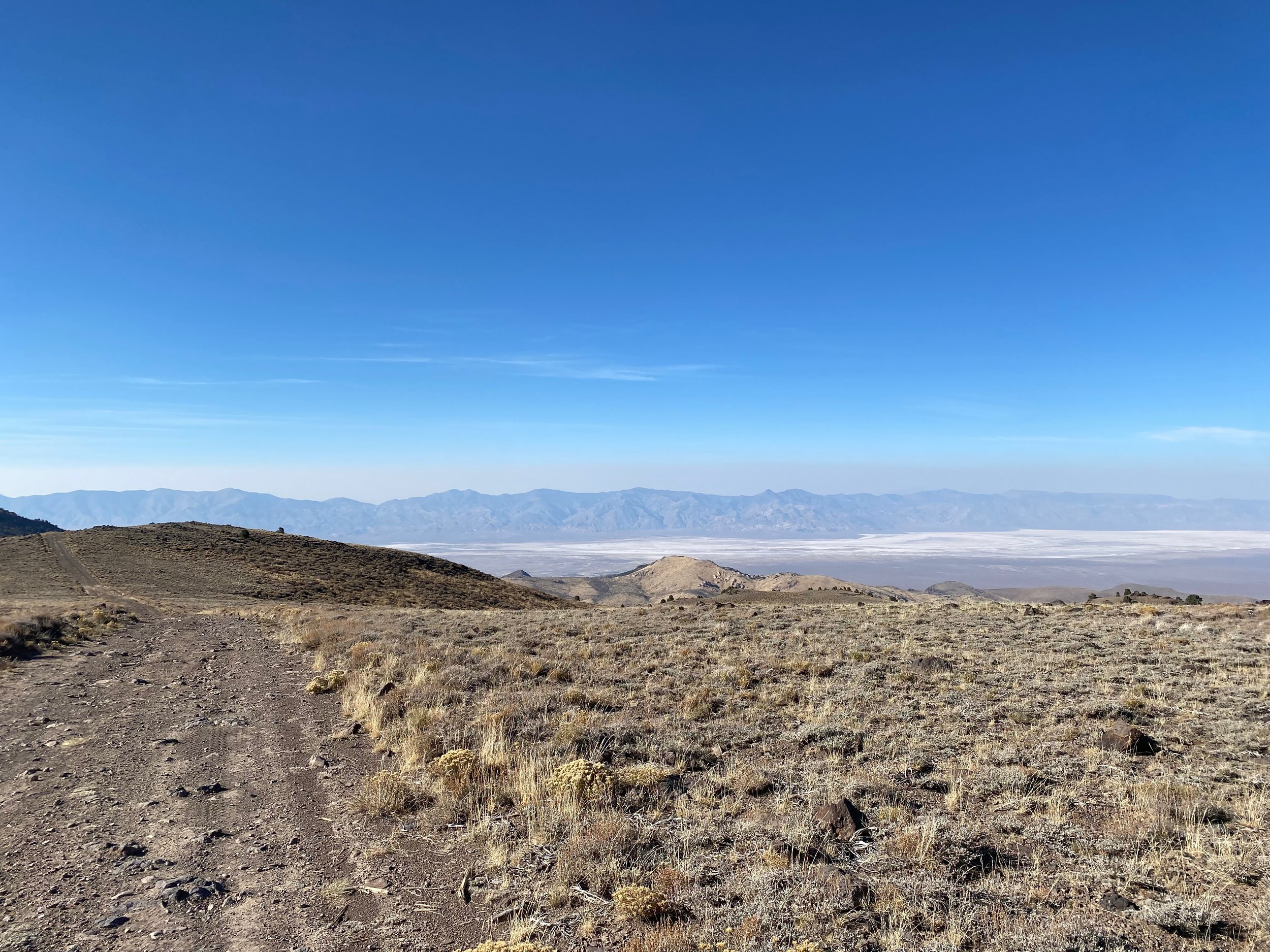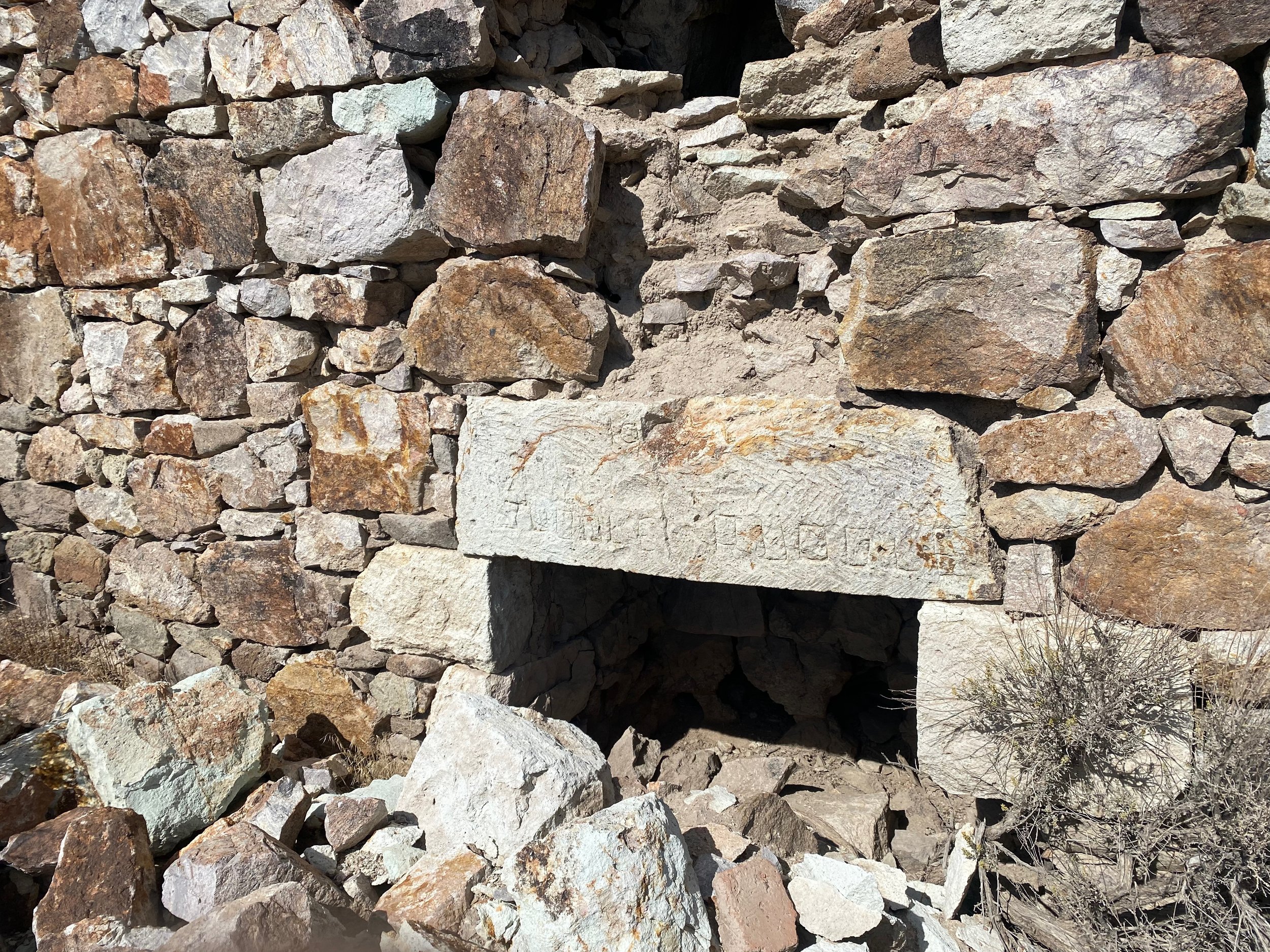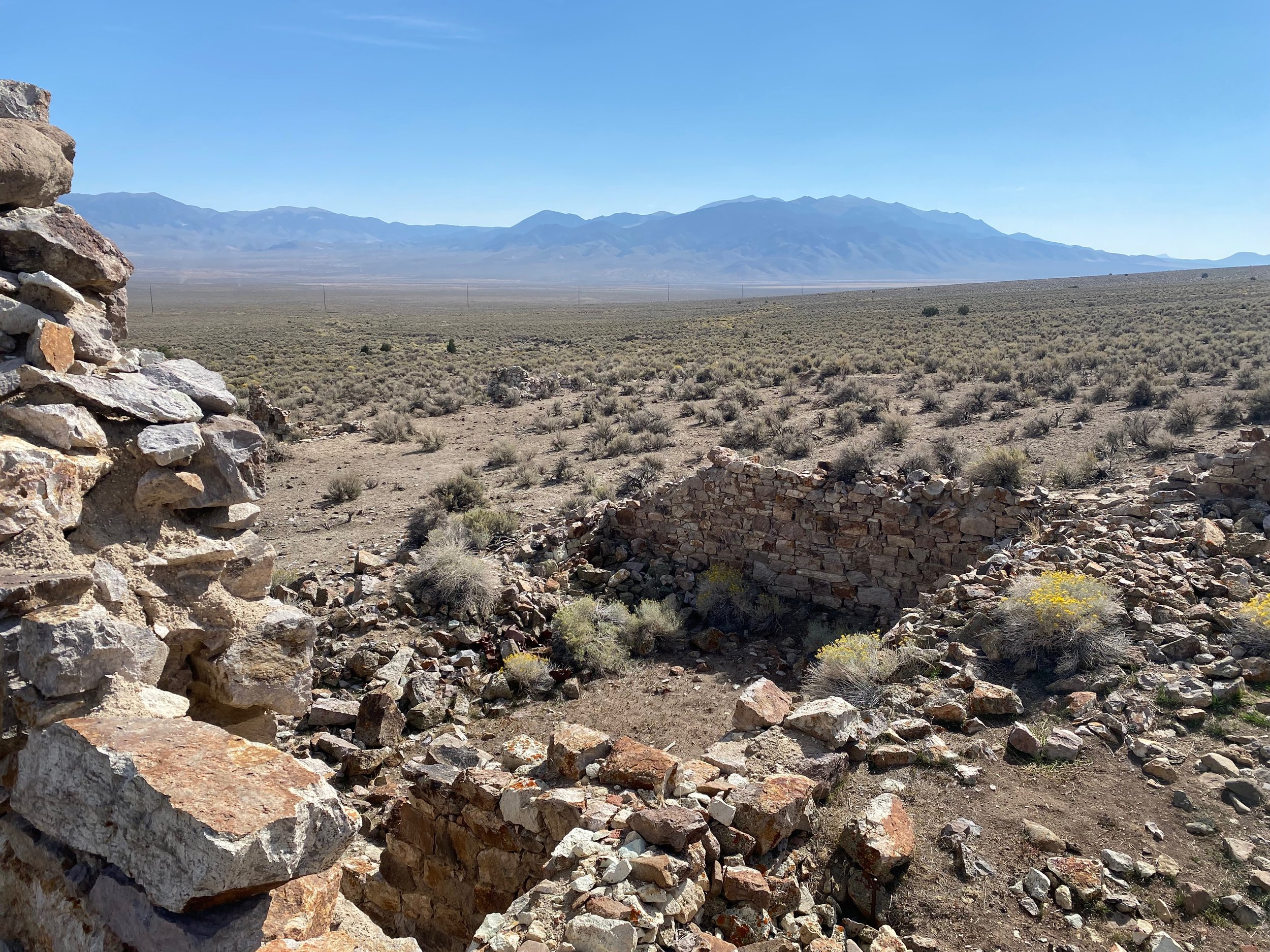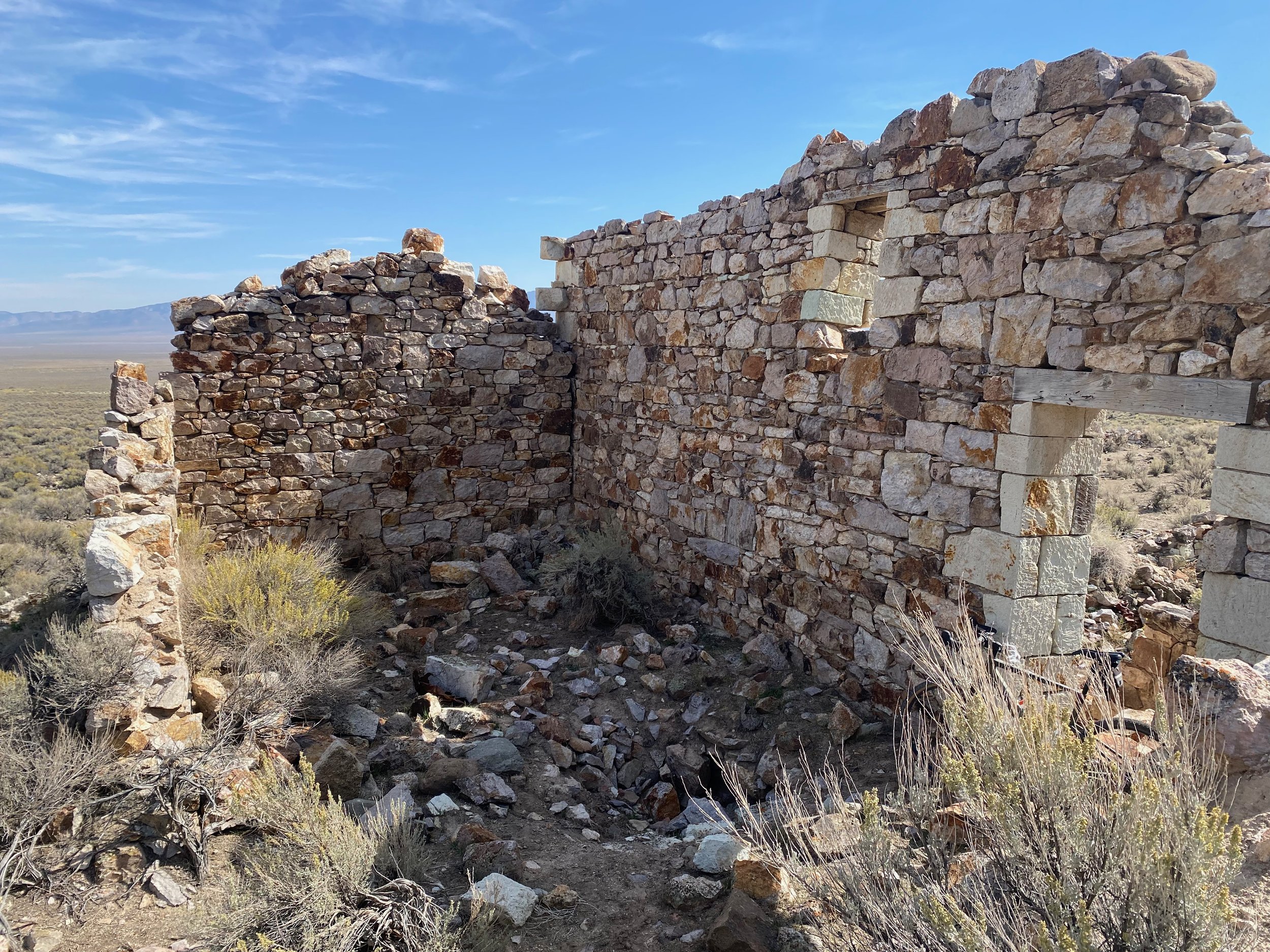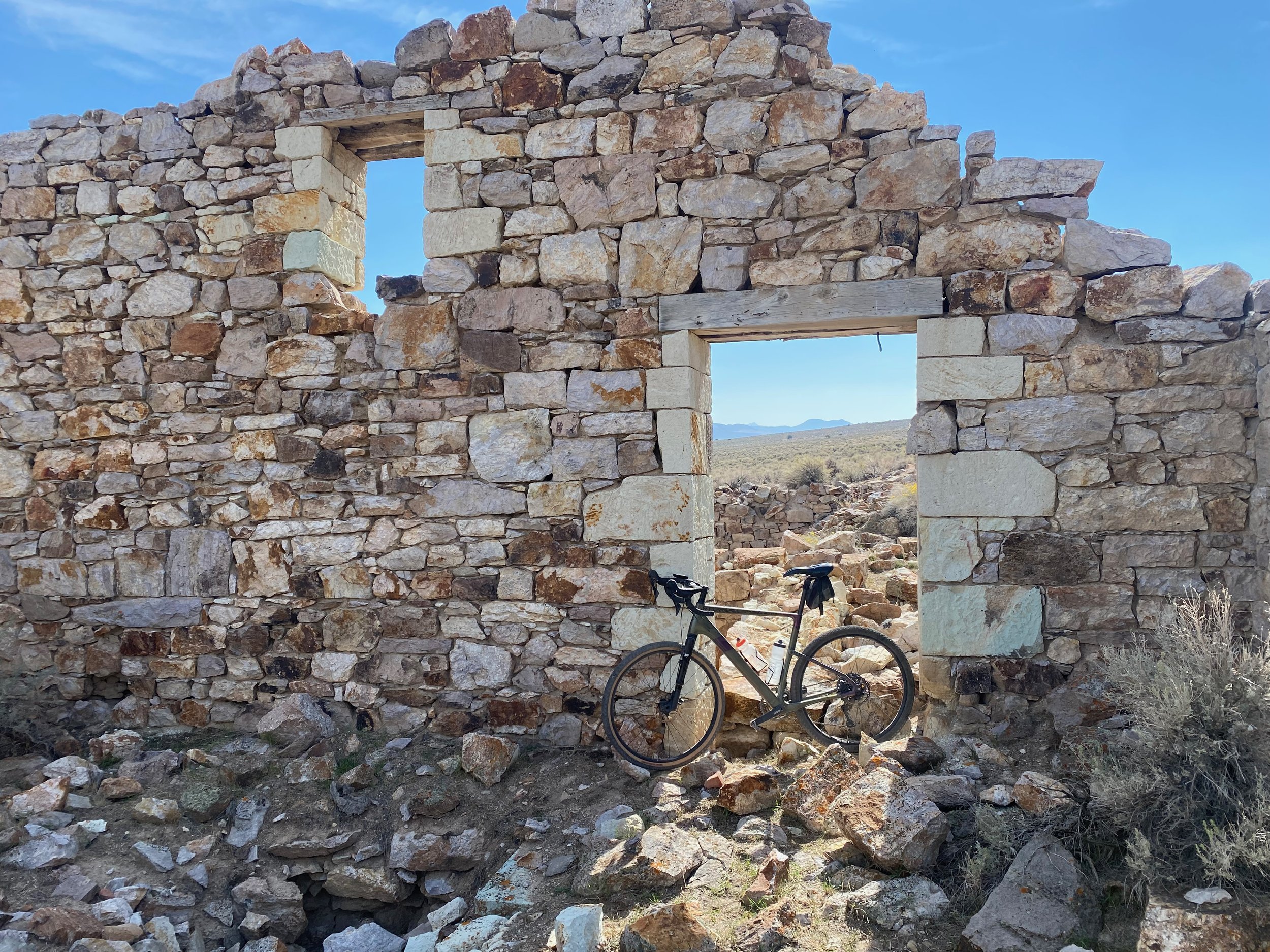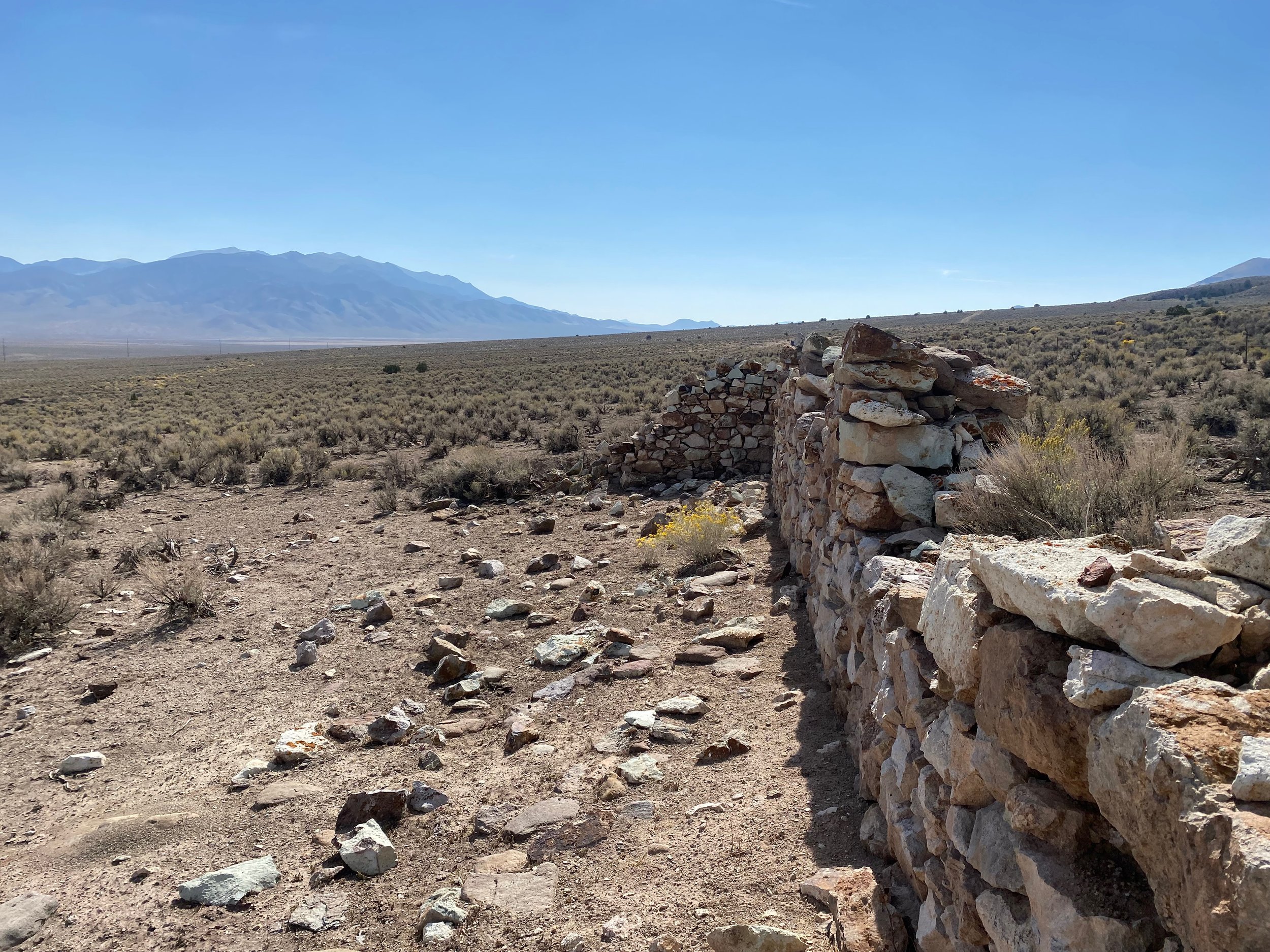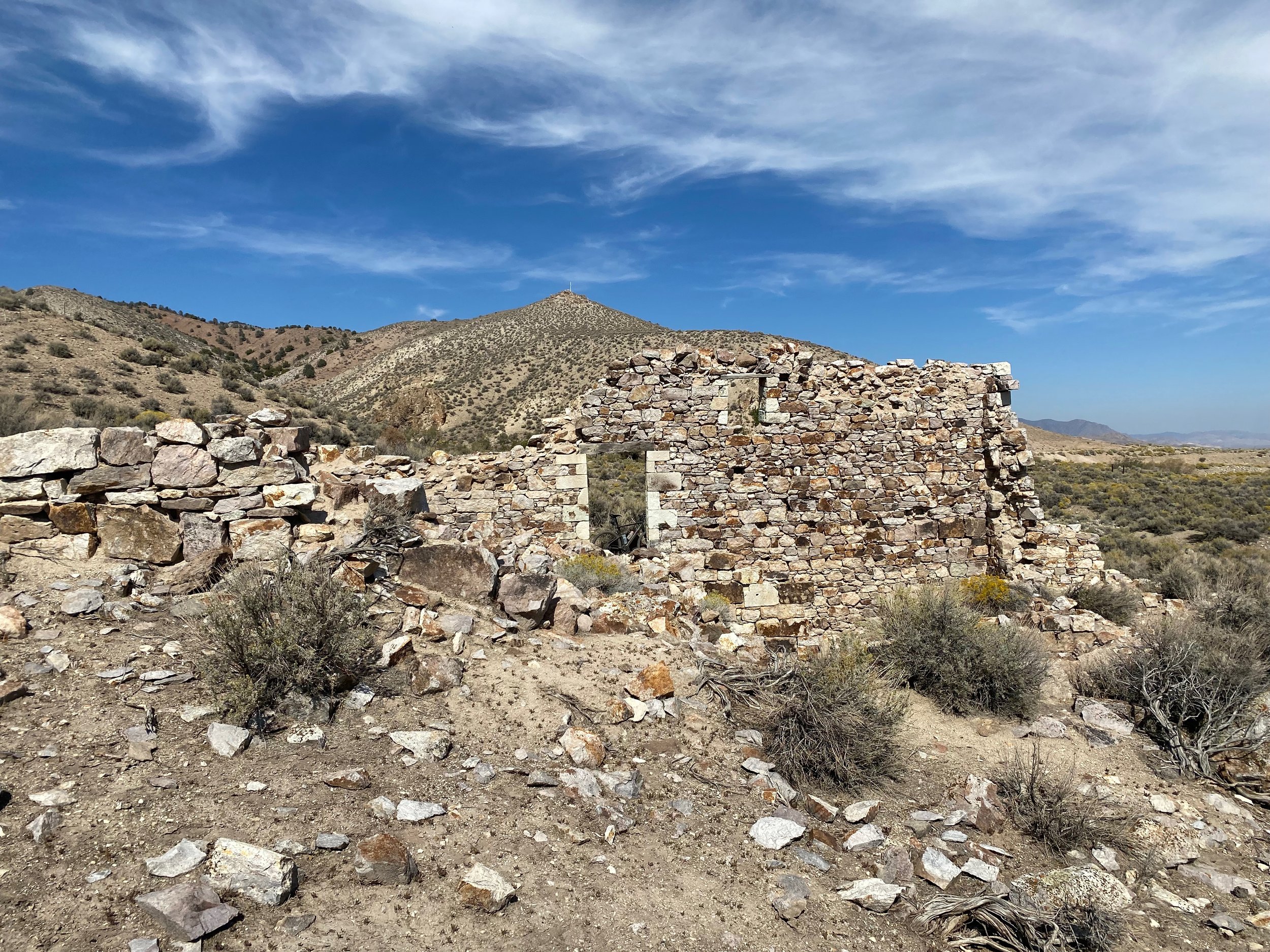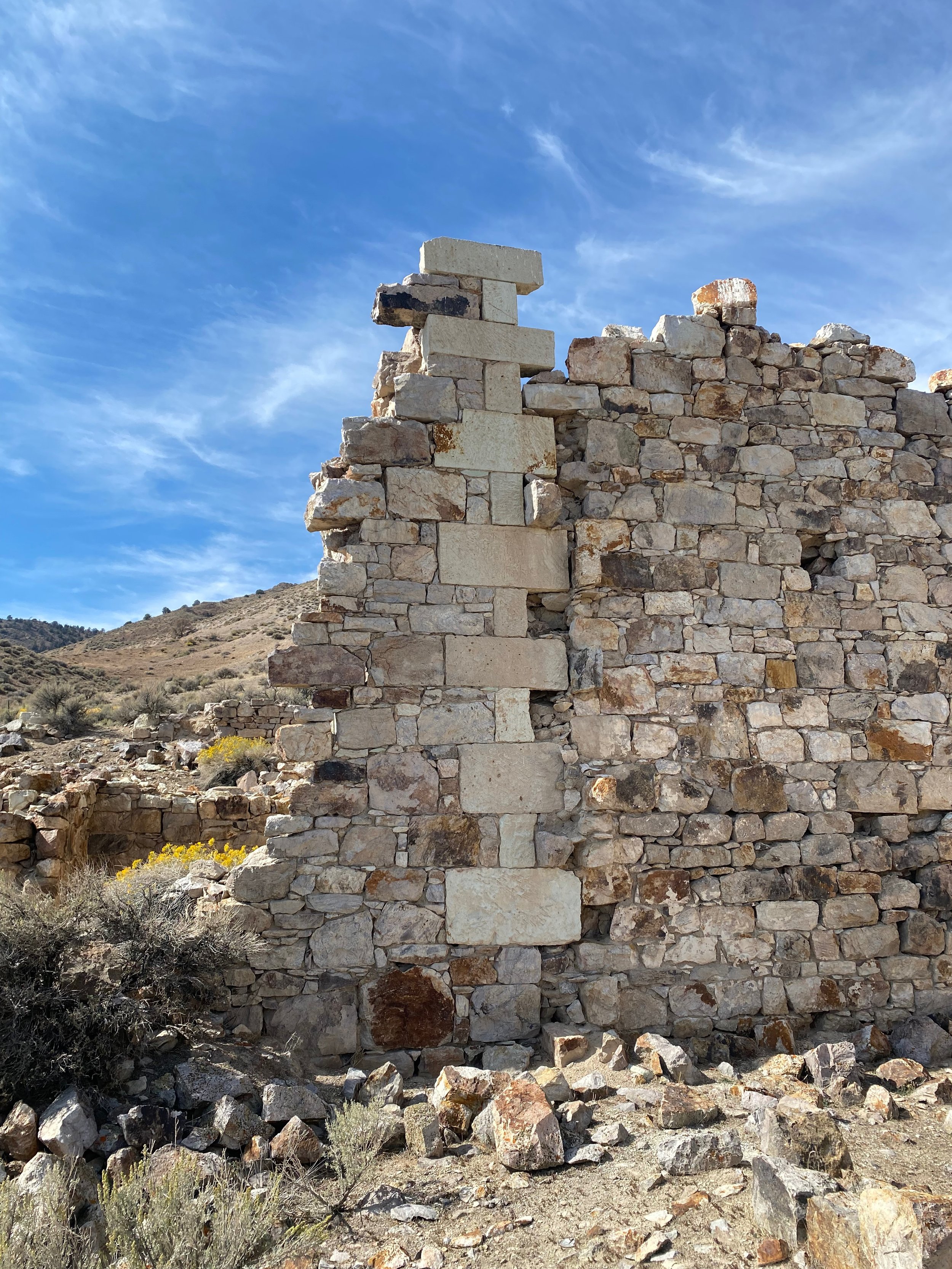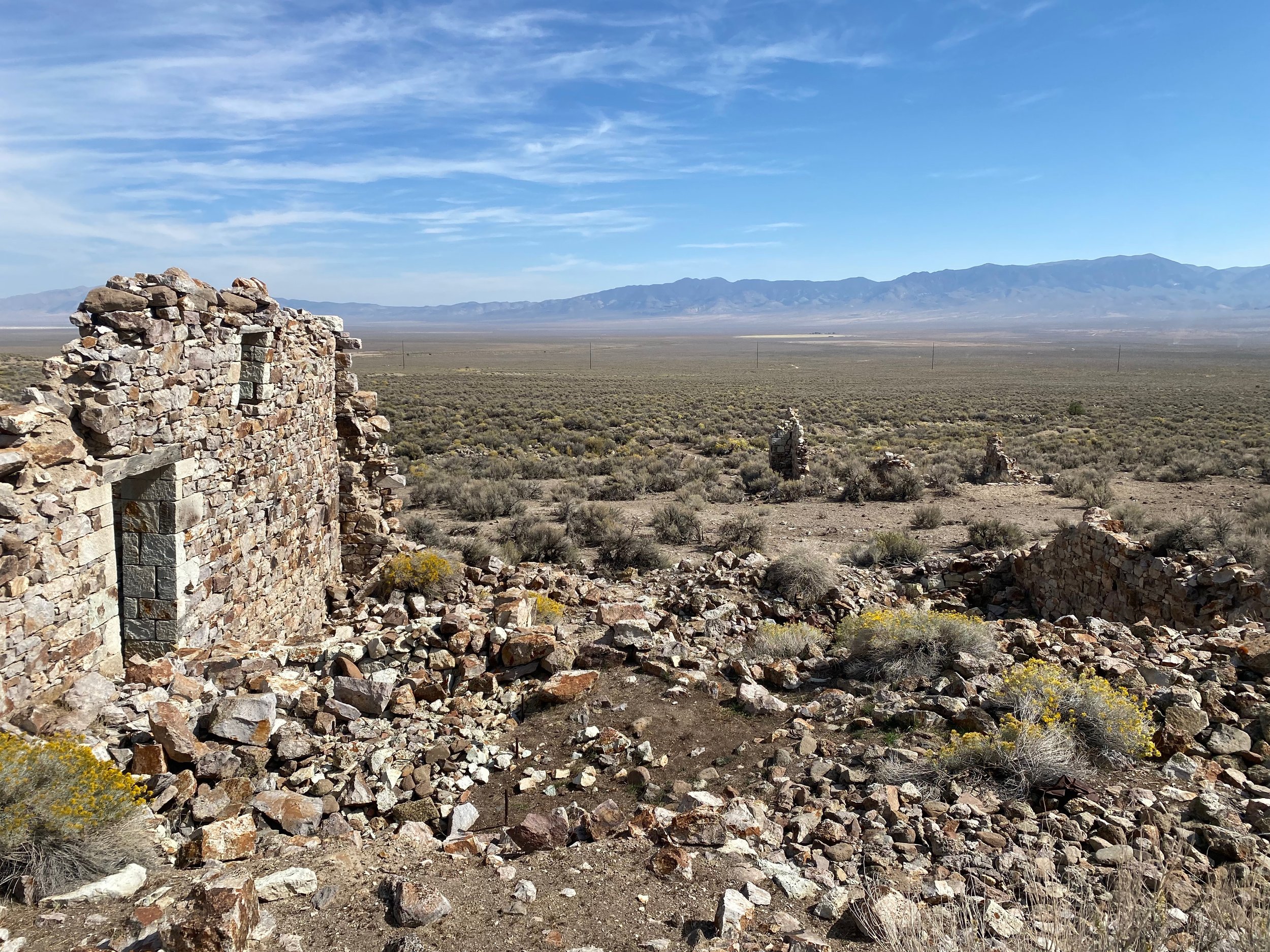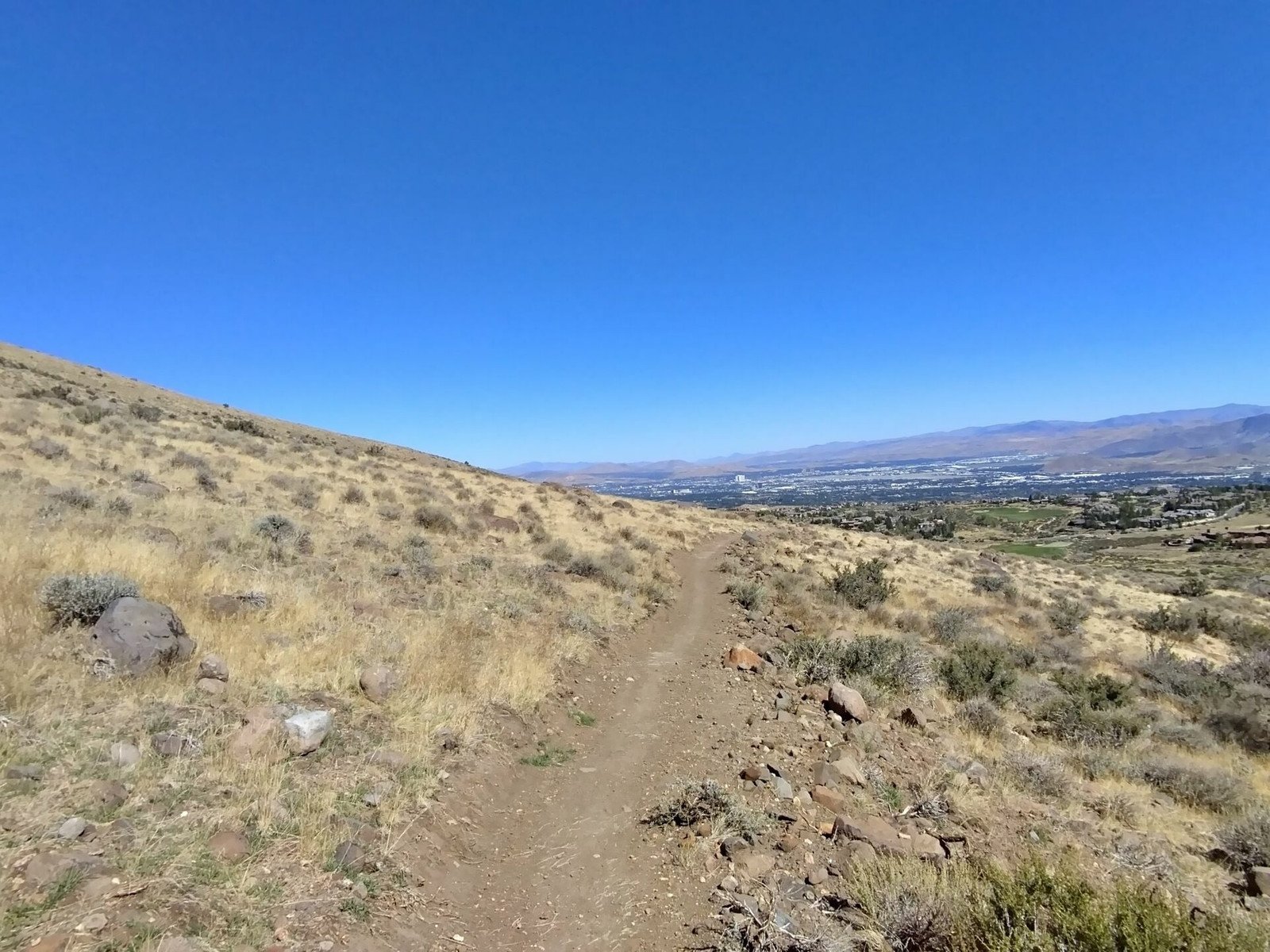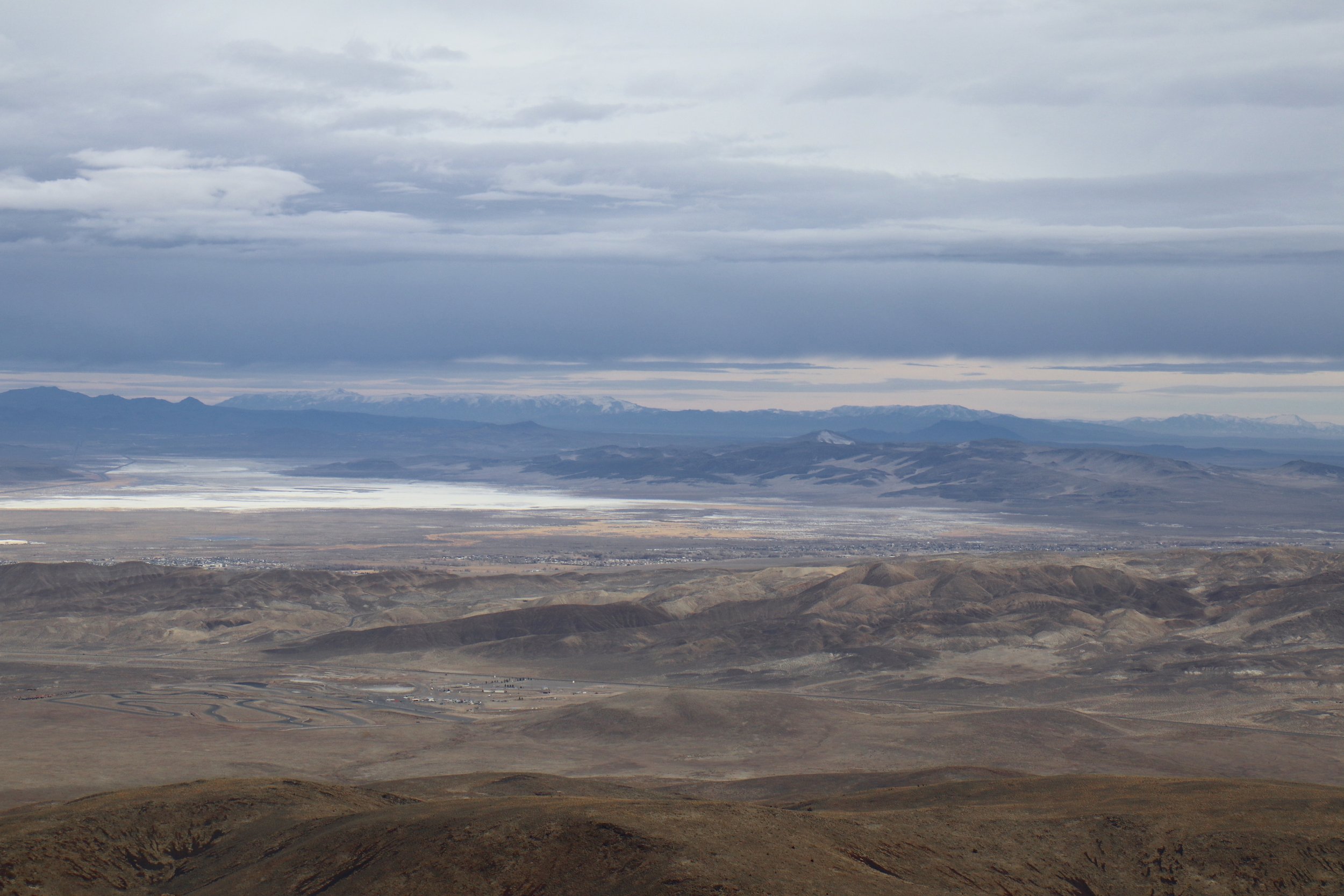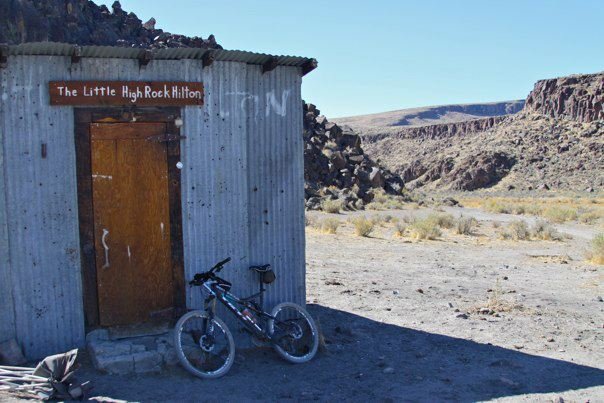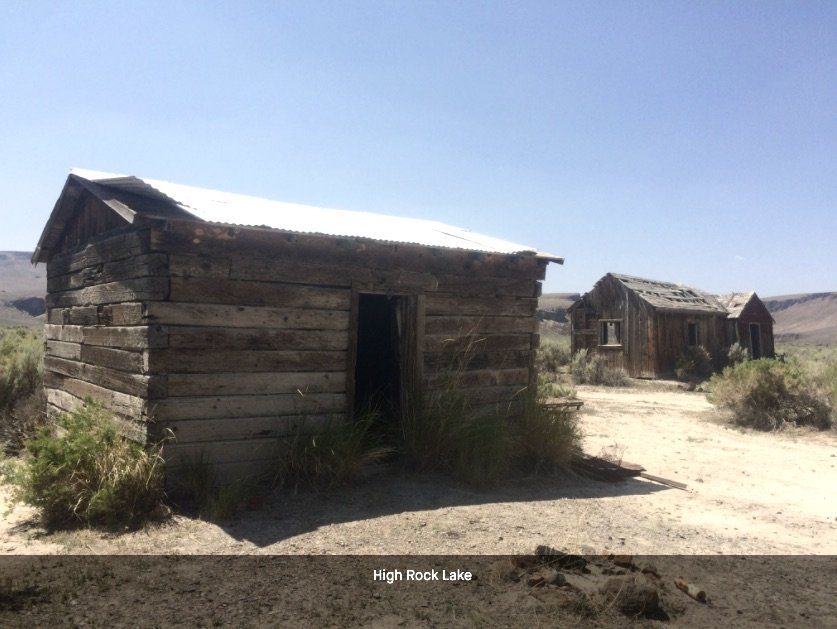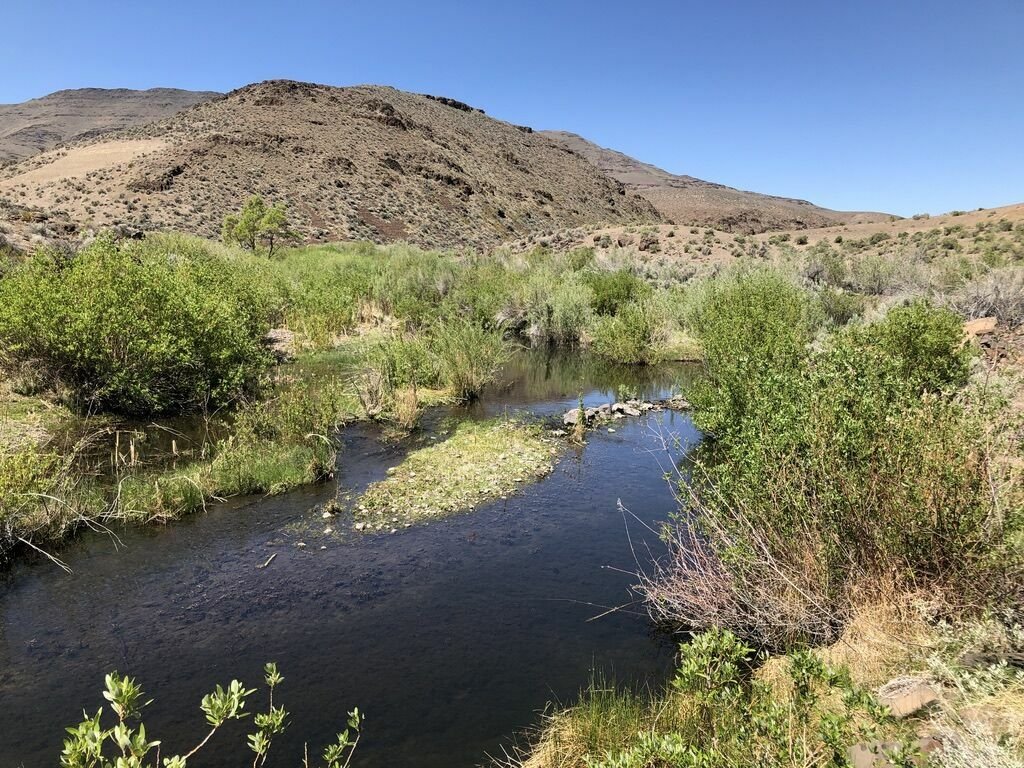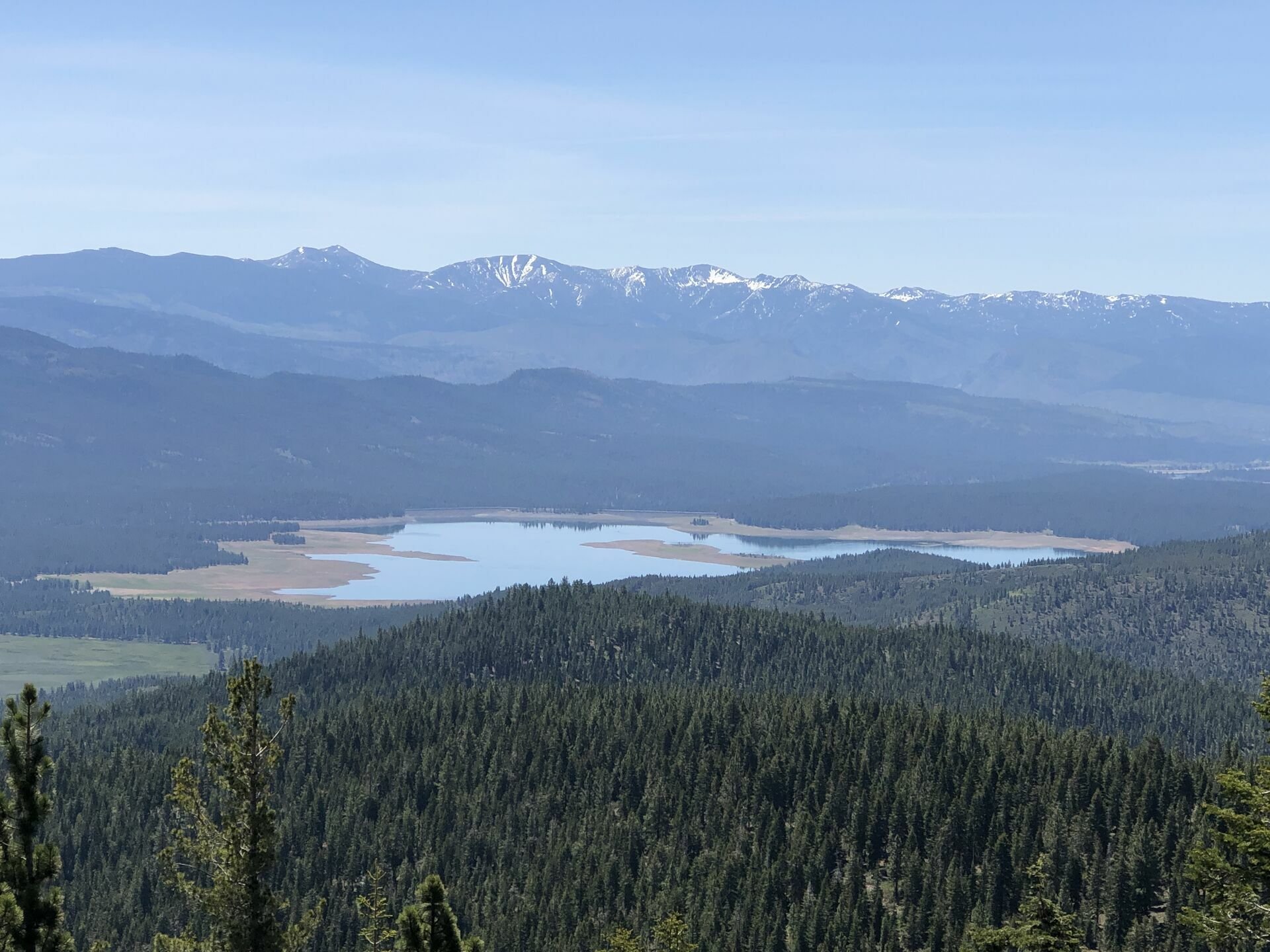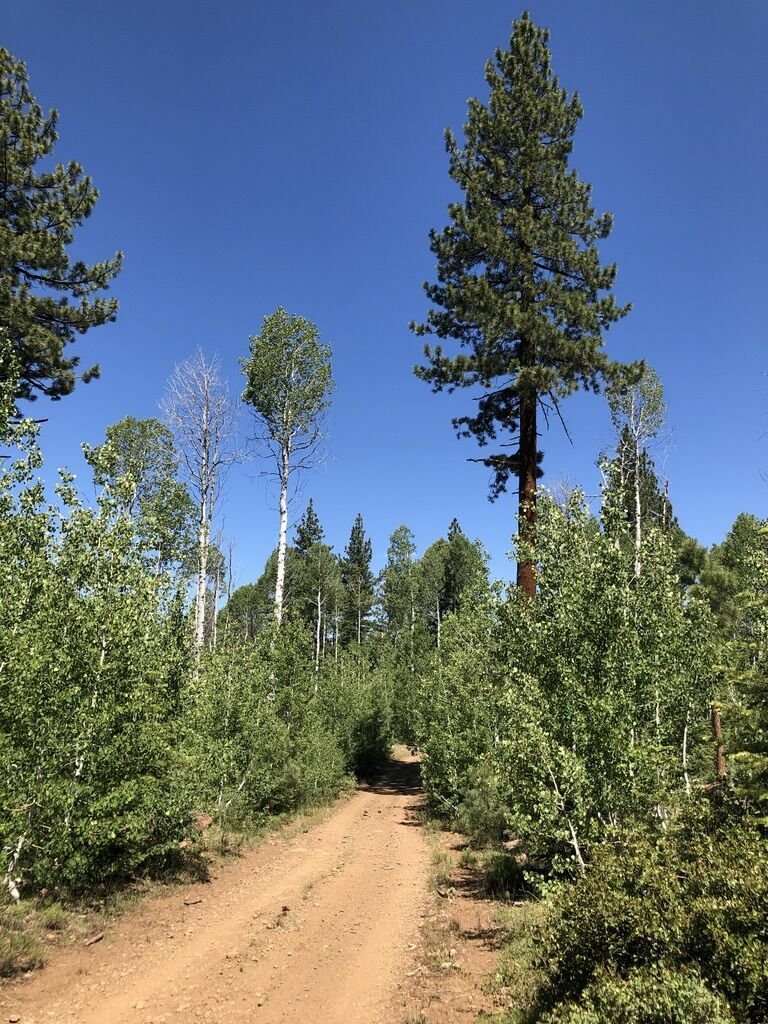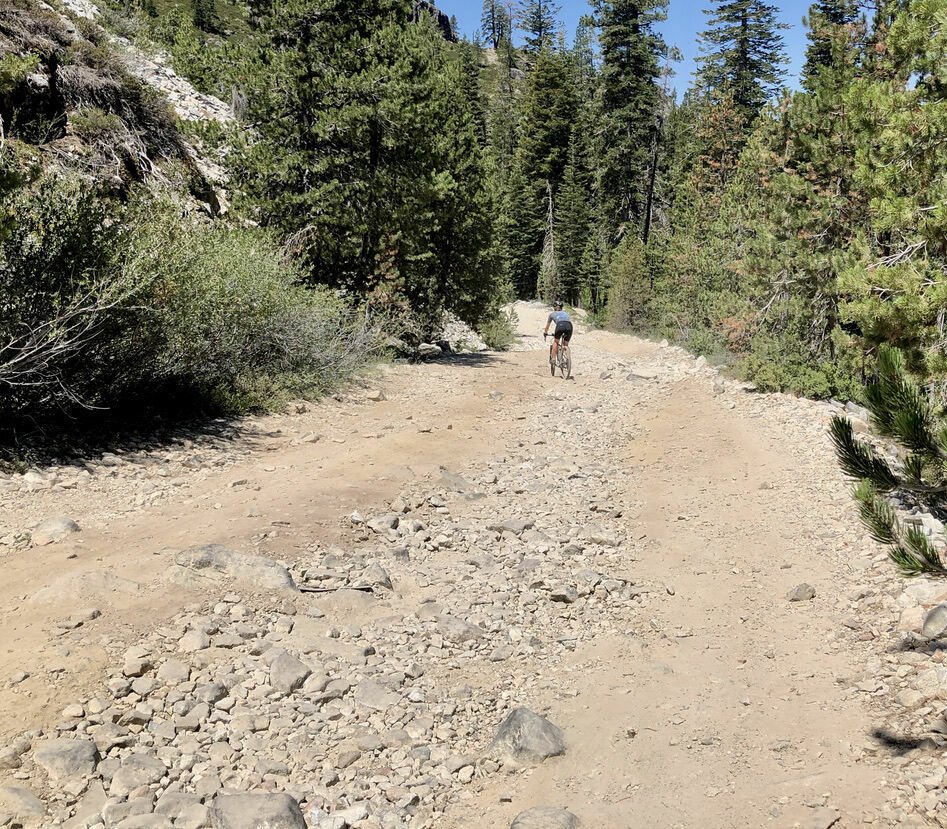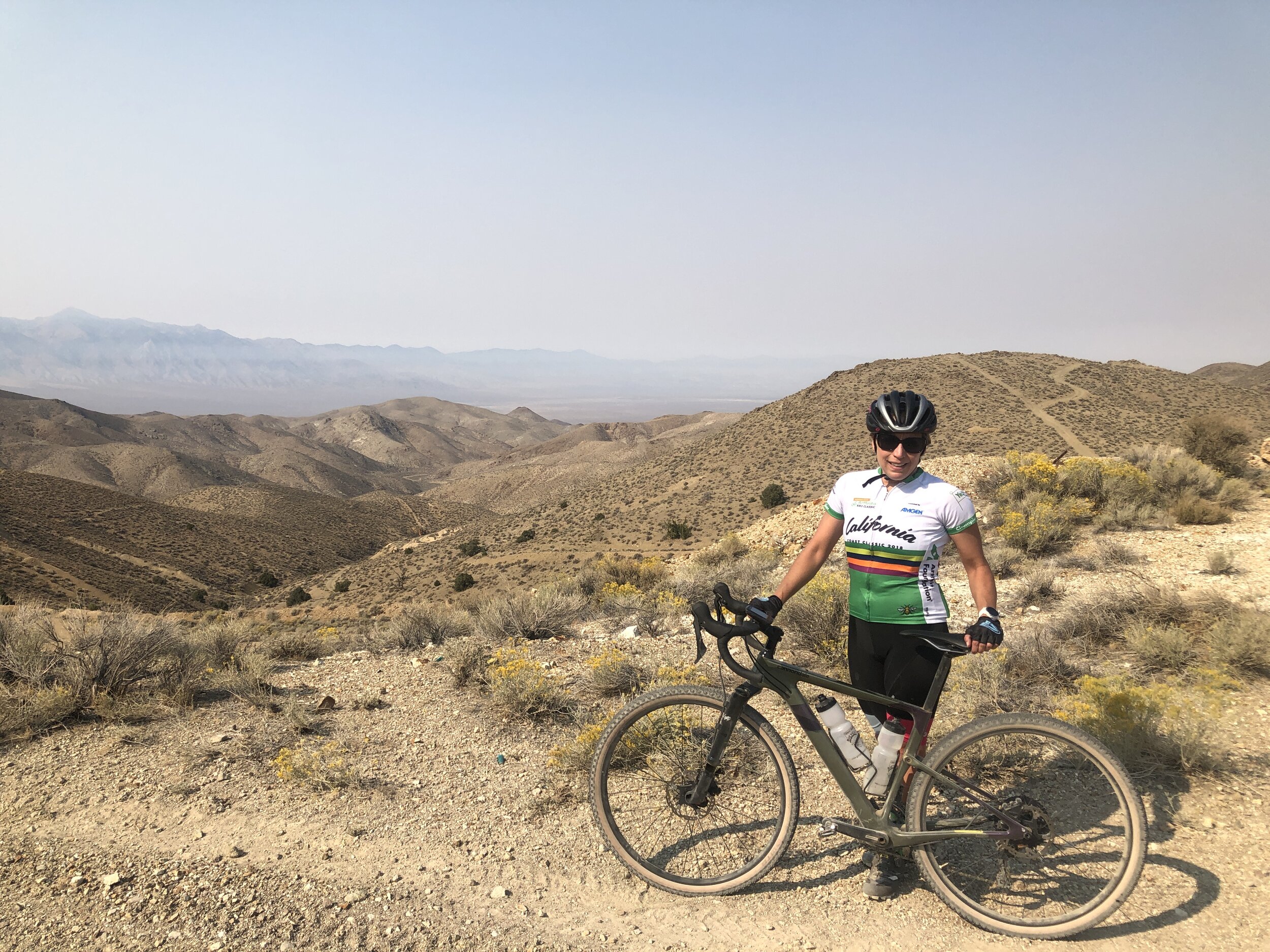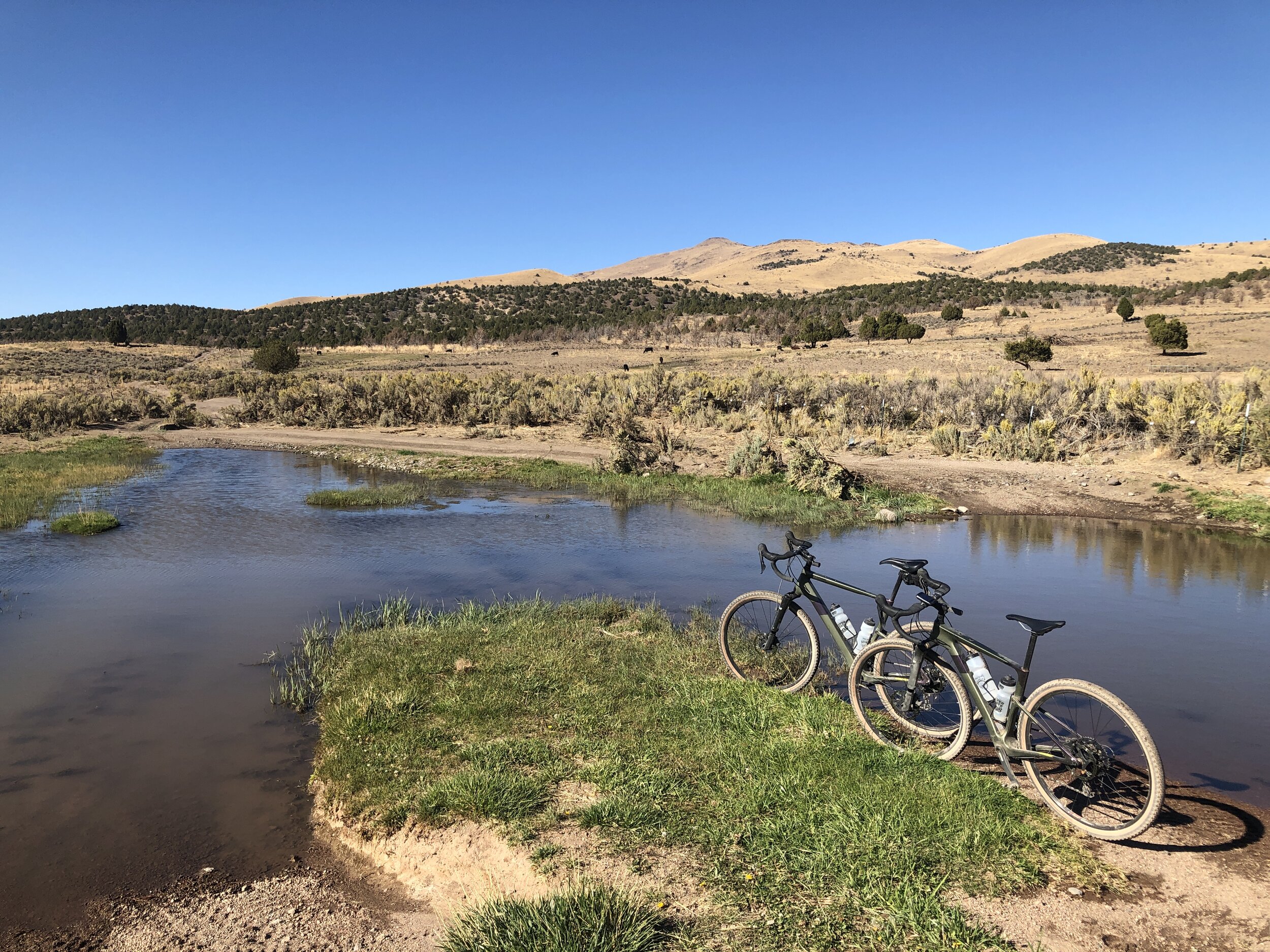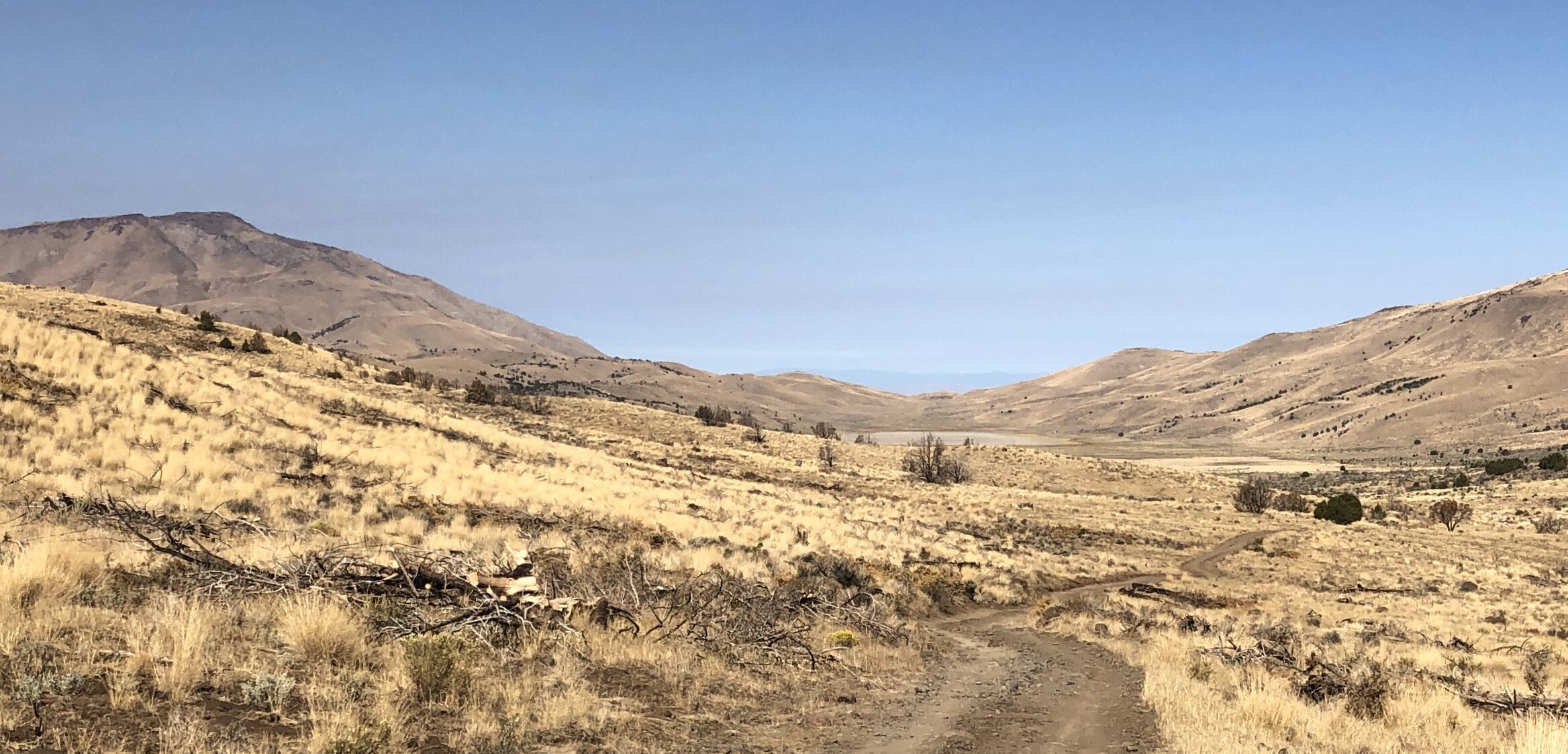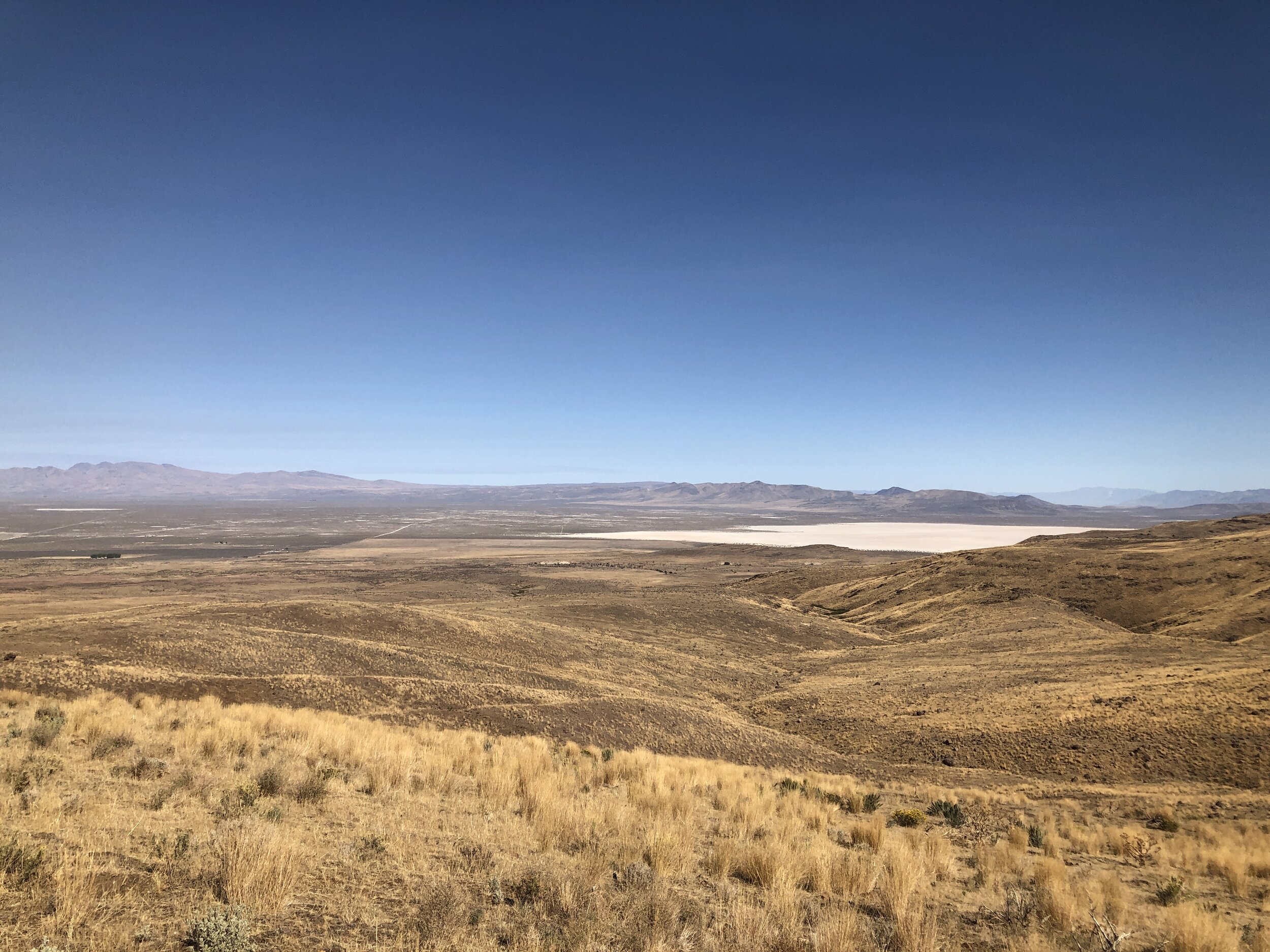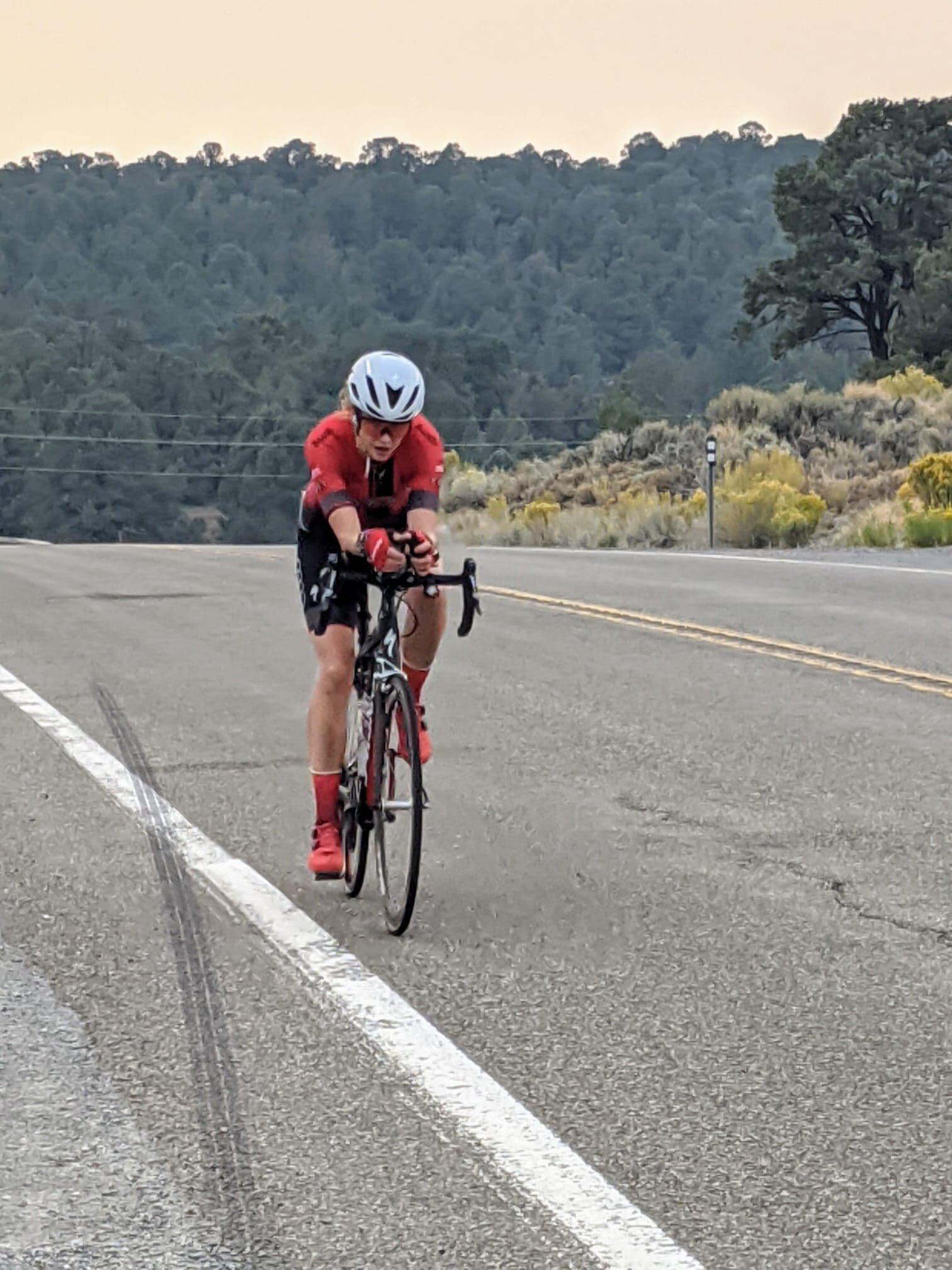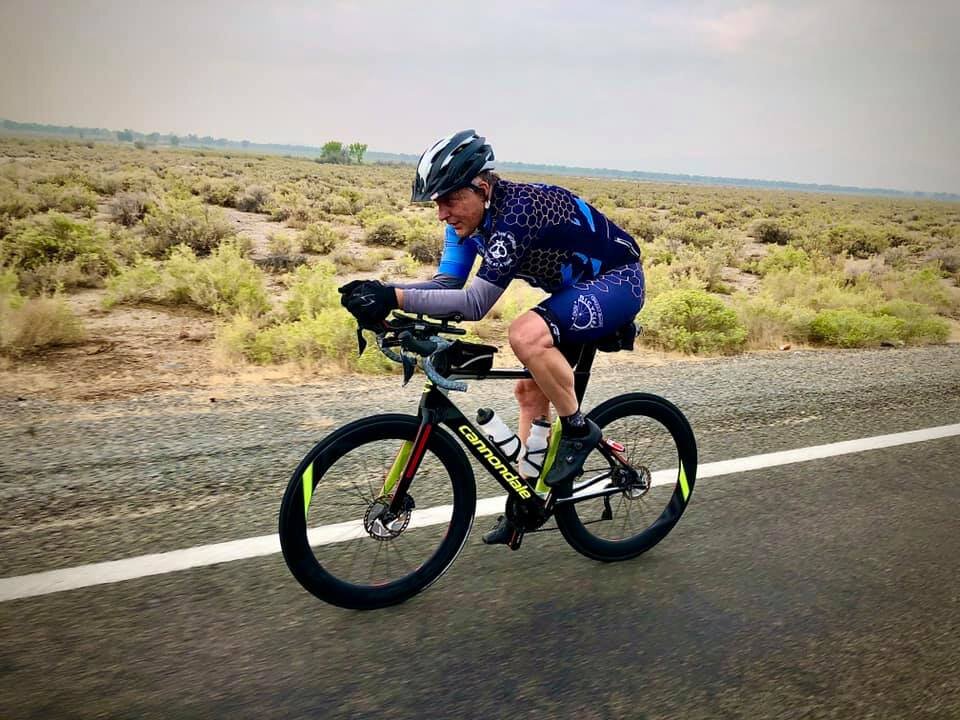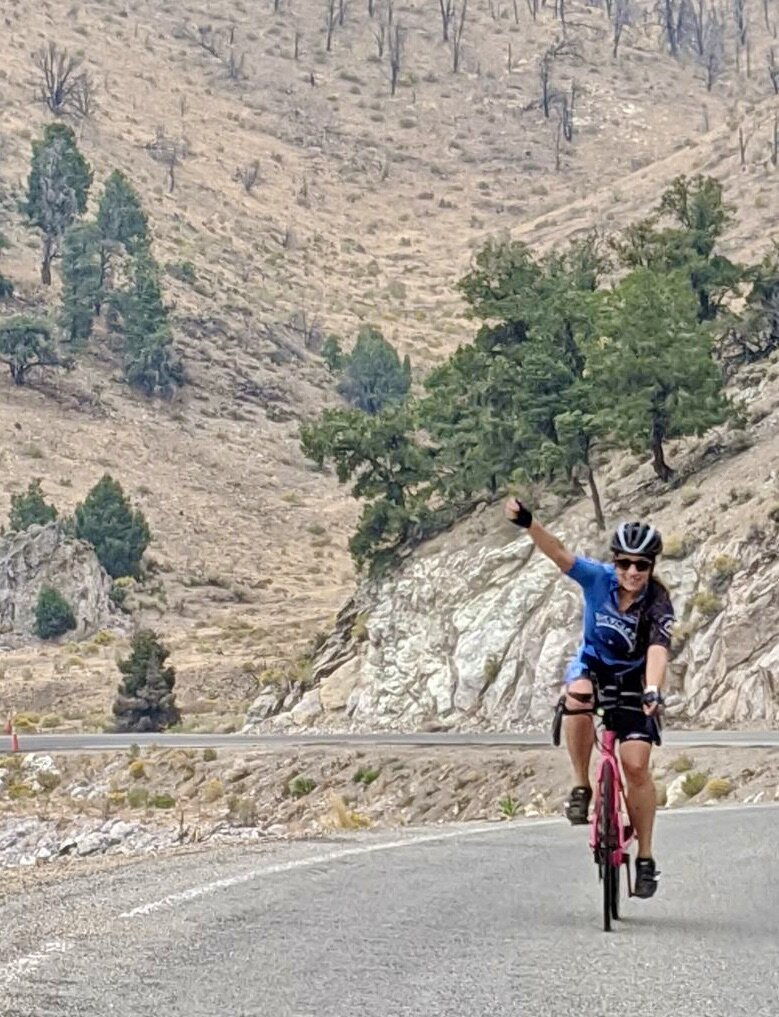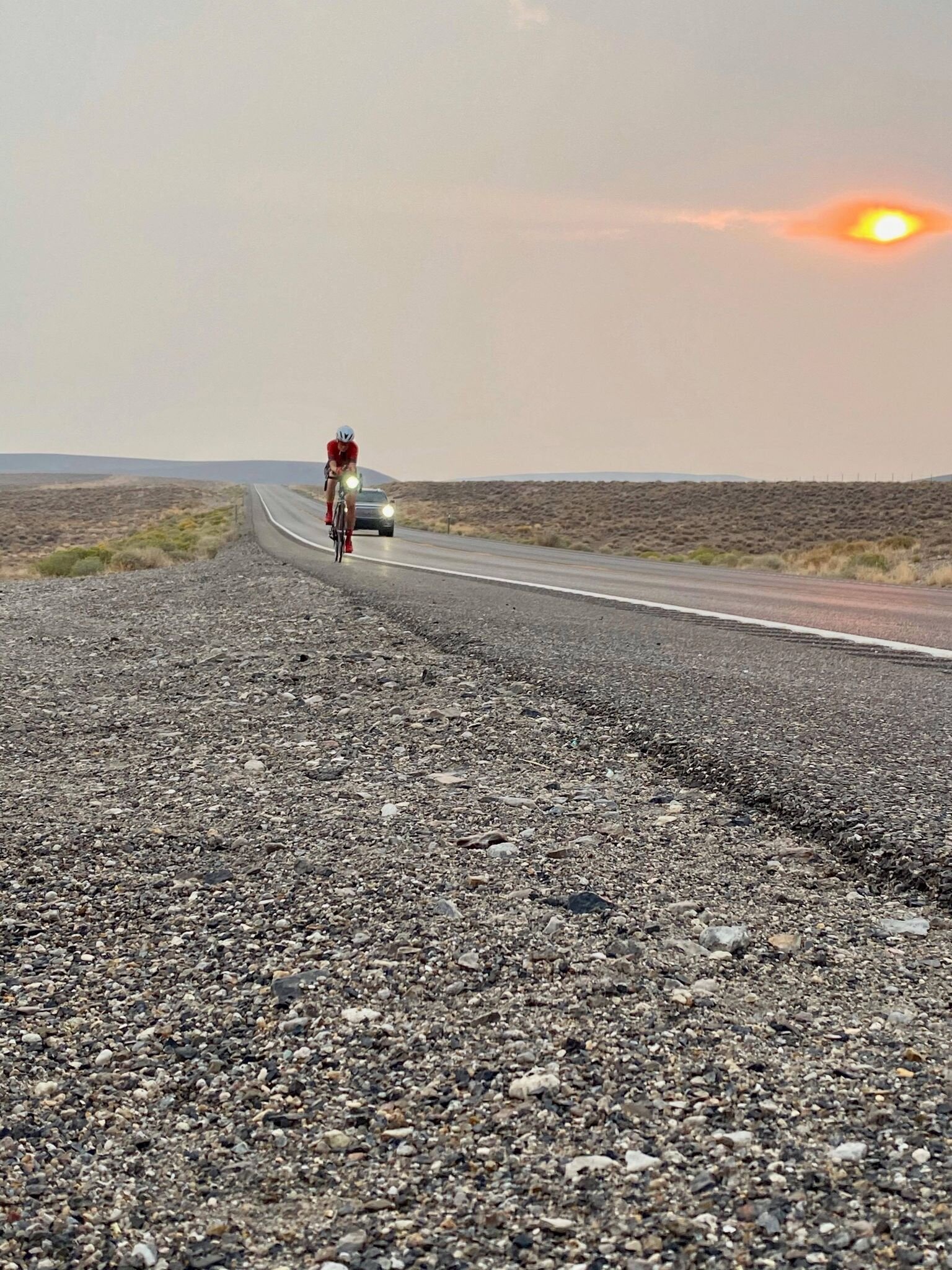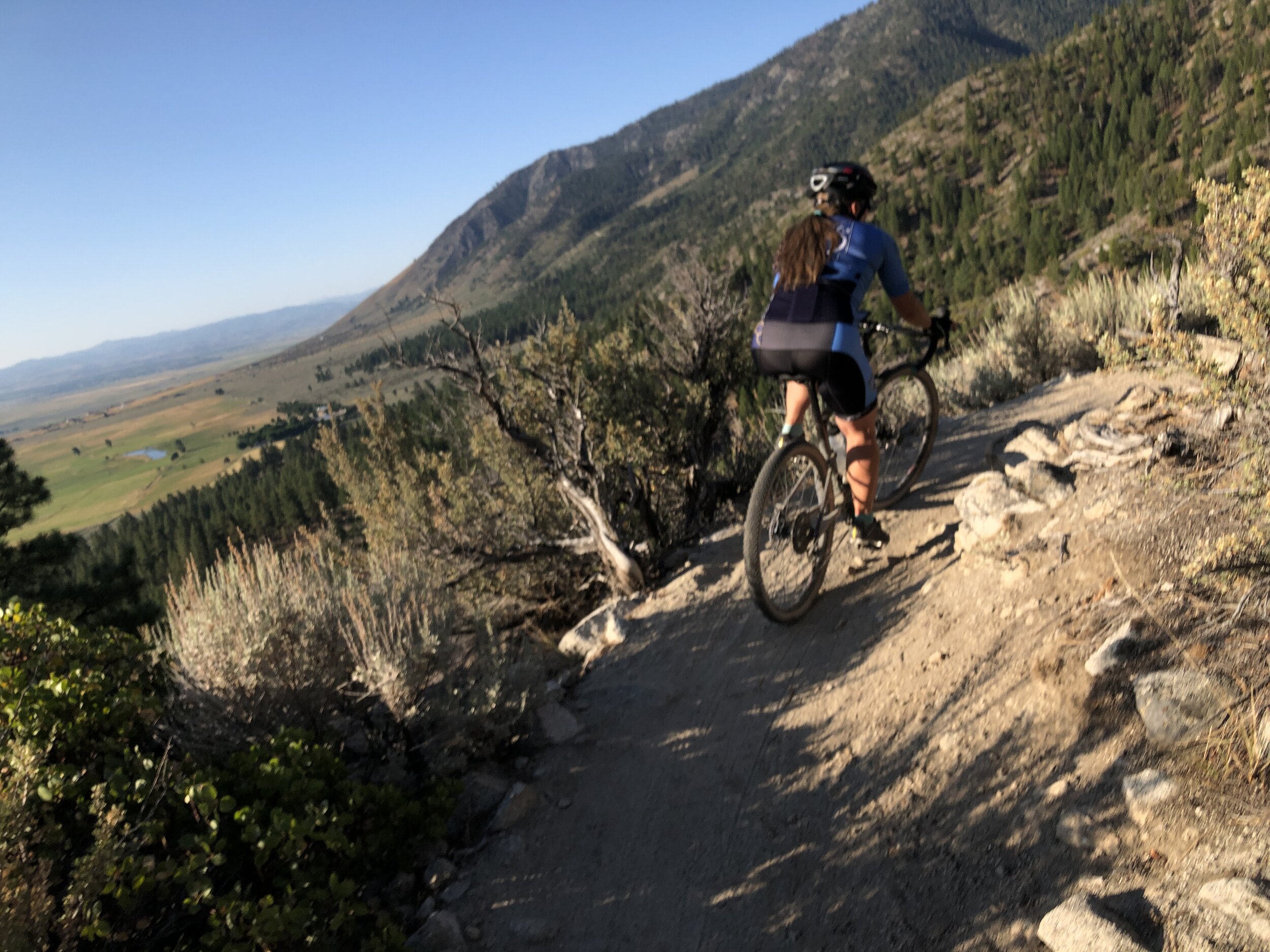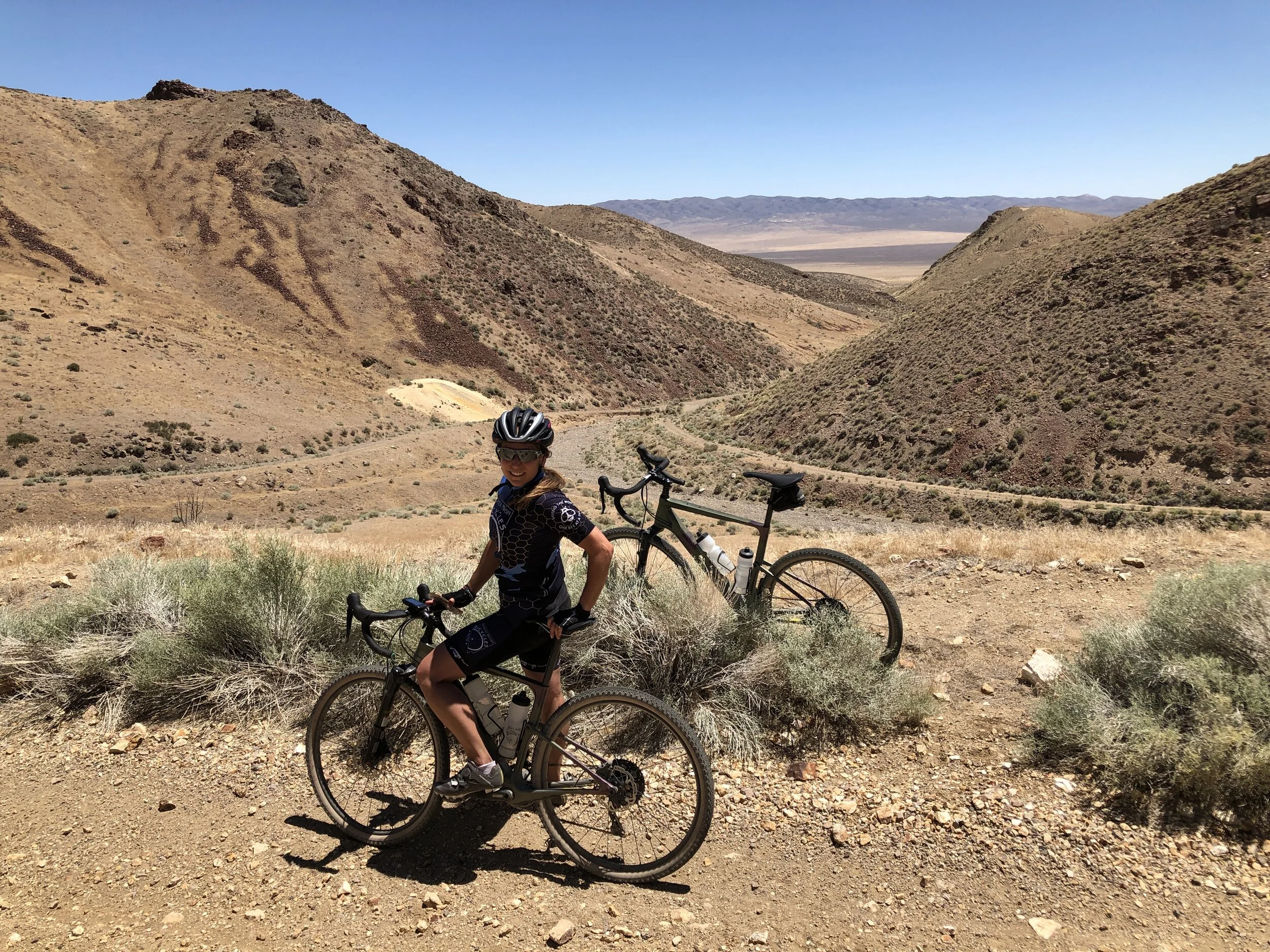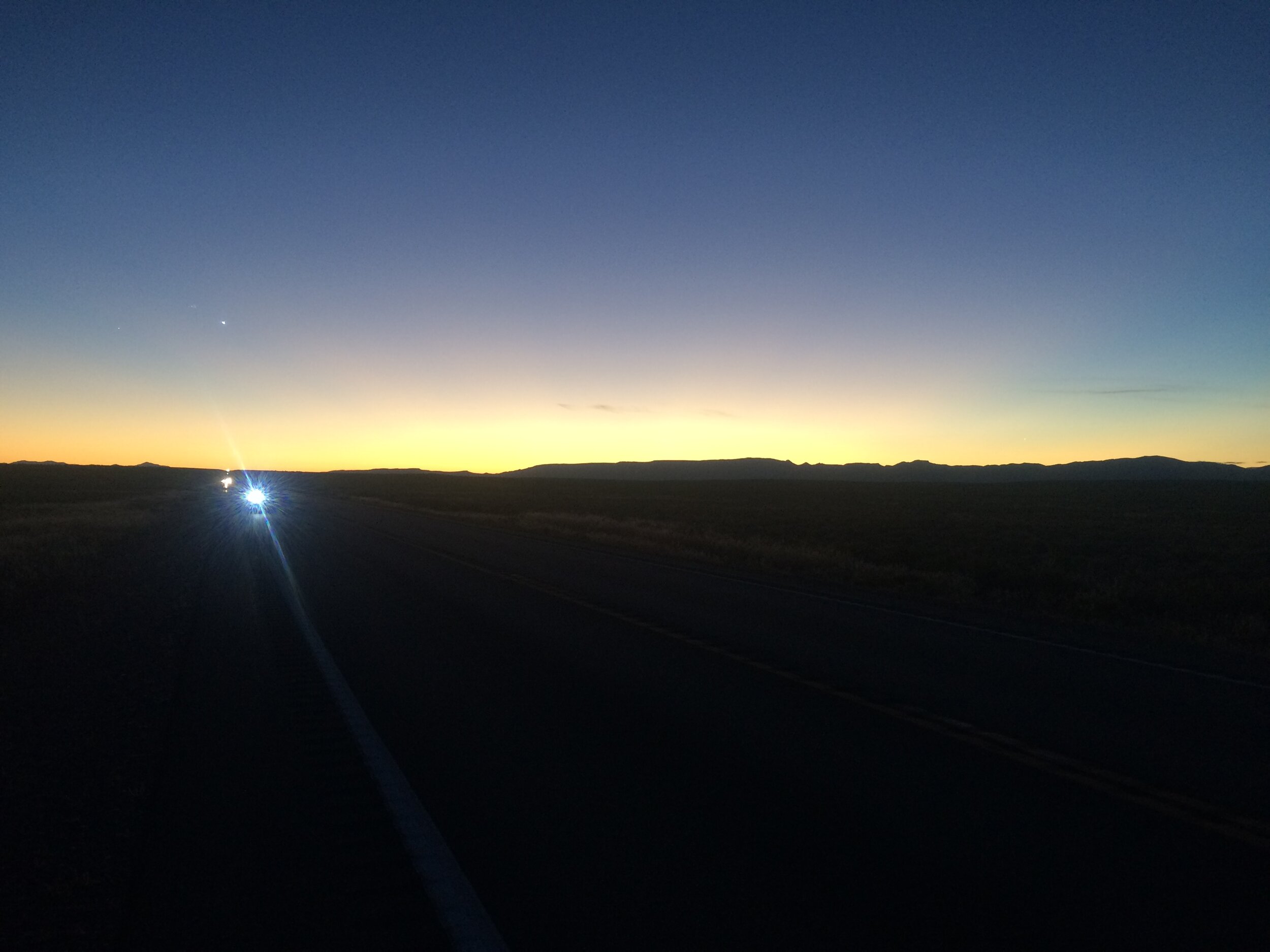The most complete “5 Stamp” mill in Nevada.
Old mine shaft cutting through the rock.
Seven Troughs Mountain range is east of Lovelock Nevada, and was a large mining district that flourished in the early 1900’s, and there is so much history that was just left behind when tragedy struck. I have the full history written up in 2 of my previous rides, “Tunnel Camp,” and “Mazuma.”
This ride is a full loop, starting in the Seven Troughs Mountain Range at the old abandoned town of Vernon, heading north, then looping back to Vernon for a 16.2 mile loop with 2250 feet of climbing. Most of the climbing is in the first 4.5 miles. There is one super steep hike a bike for maybe 20 yards, then the rest is ridable for gravel or mountain bike. This loop encompasses most of the old mining equipment and buildings that were just abandoned after a horrible flood that took out the main mining area up Seven Troughs Canyon and washing the town of Mazuma off the map in 1912 and killing 20 people. The mining district held on till 1920 when it was finally completely abandoned.
Jail House at Vernon.
For the start of this ride, drive out to Lovelock, NV on I-80 East out of Reno. Once in Lovelock, take Hwy 399 for just over 12 miles, and turn right on the dirt road. Follow this beautiful smooth dirt road for 4.8 miles where the road will fork. Take the left fork for 1/2 mile, and stay to the left again. In 4.5 miles you will come to a “T” intersection. Take a quick right, then a quick left. Follow this road west for 2.2 miles, and you will arrive at the old town site of Vernon. The old Jailhouse walls still stand, and this is all that remains of Vernon. Here is the google link for the start of the ride at Vernon. (Vernon start point)
The view from the top of the climb out of Vernon.
Once at Vernon, take the dirt road that heads North up the Canyon. In 1/2 mile, there will be a short right turn that will take you to an old Hopper. The miners would fill this hopper with ore, and it would fill the vehicle below full of ore. Follow the road back to the main road and head up the canyon. The road continues to climb, and at 2.8 miles from the start, the road takes a sharp left up a short “Hike a Bike” section of road. It looks like you should go strait, but that road just goes up to the ridge and dead ends with no way down other than back tracking. So, hike up this short steep section and follow the road further up the canyon. You will pass old collapsed buildings and mine stuff everywhere. Then you will switch back up to the ridge at 4 miles from the start. You can take the spur to the left if you want a beautiful view of everything to your South.
Upper processing plant at the top of Seven Troughs Canyon
Old General Store Safe.
Here the road follows the ridge, then quickly drops into Seven Troughs Canyon. The road is a little loose and rocky. I rode this on a gravel bike, but a mountain bike would make this section easier. Follow the road down into the canyon, and in 6 miles from the start you will be at the upper end of the mining activity in Seven Troughs Canyon. There is tons of history left behind here. The upper processing plant, leach pond, and tons of mine shafts on both sides of the canyon. The miners laid pipe from just above this point and piped it all the way down to the town of Mazuma that used to be in the mouth of the canyon. As you head towards the mouth of the canyon, you will see an old rusty safe on the side of the road. It is said that this safe was said to be in the General Store.
Wild Horse Canyon Mine Site.
Tunnel Camp town Site.
Follow the road down the canyon, and in 7.8 miles you will see your return road to the right. We will get back to this road in a bit. Stay straight, heading east, then take the first left. In 1/2 mile, take a left again and head up Wild Horse Canyon. The road has been mostly washed out, but quads and motorcycles and carved a ridable trail up the canyon. In 10.5 miles from the start, you will come to a very cool mine site. The old entrance of the mine is still in tact, and if you ride up around the back of the structure, there is a mine hole that drops down to the main tunnel. Last time I was there, someone had placed an aluminum ladder into the hole to go down and explore the main tunnel. Not recommended! But cool to look at all the abandoned stuff just lying around. At this point, head back down the canyon, and back to the site of Mazuma at the base of Seven Troughs Canyon. Here, take a left to head to the town site of Tunnel Camp. On the side hill to the right you will see the old ore processing foundation. Continue South following the road along the contour and in 14 miles from the start, you will see Tunnel Camp on your right, and the old grave yard a little lower to your left. Climb up to Tunnel camp and explore all the buildings, and the most complete 5 stamp mill in the state. The miners would fill the upper hopper with ore, and the ore would be stamped or crushed by the 5 piston hammers, then the gold would be extracted.
Once you have explored Tunnel Camp, jump back on the main road, head south and follow the road back to Vernon for 16.2 miles total.
Tunnel Camp taken from the Cemetery.
